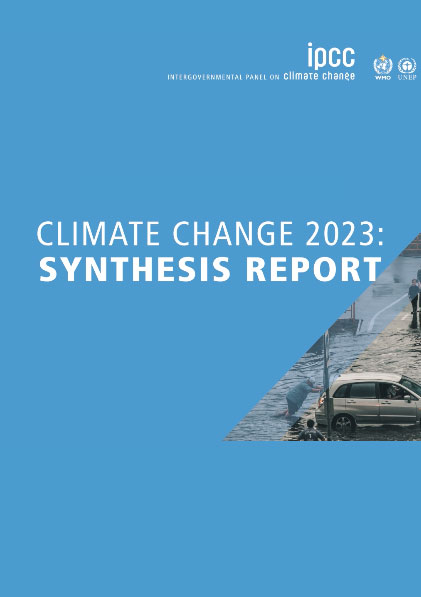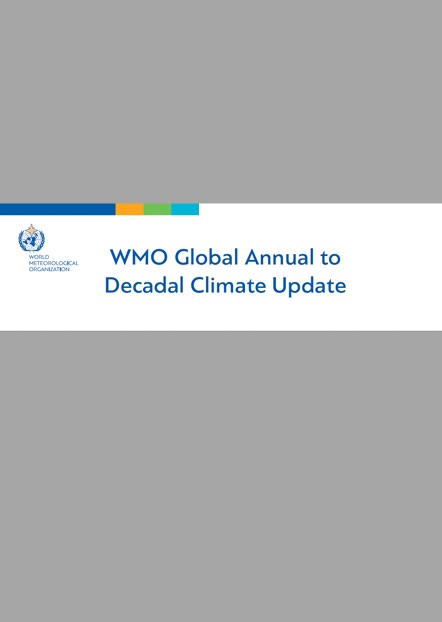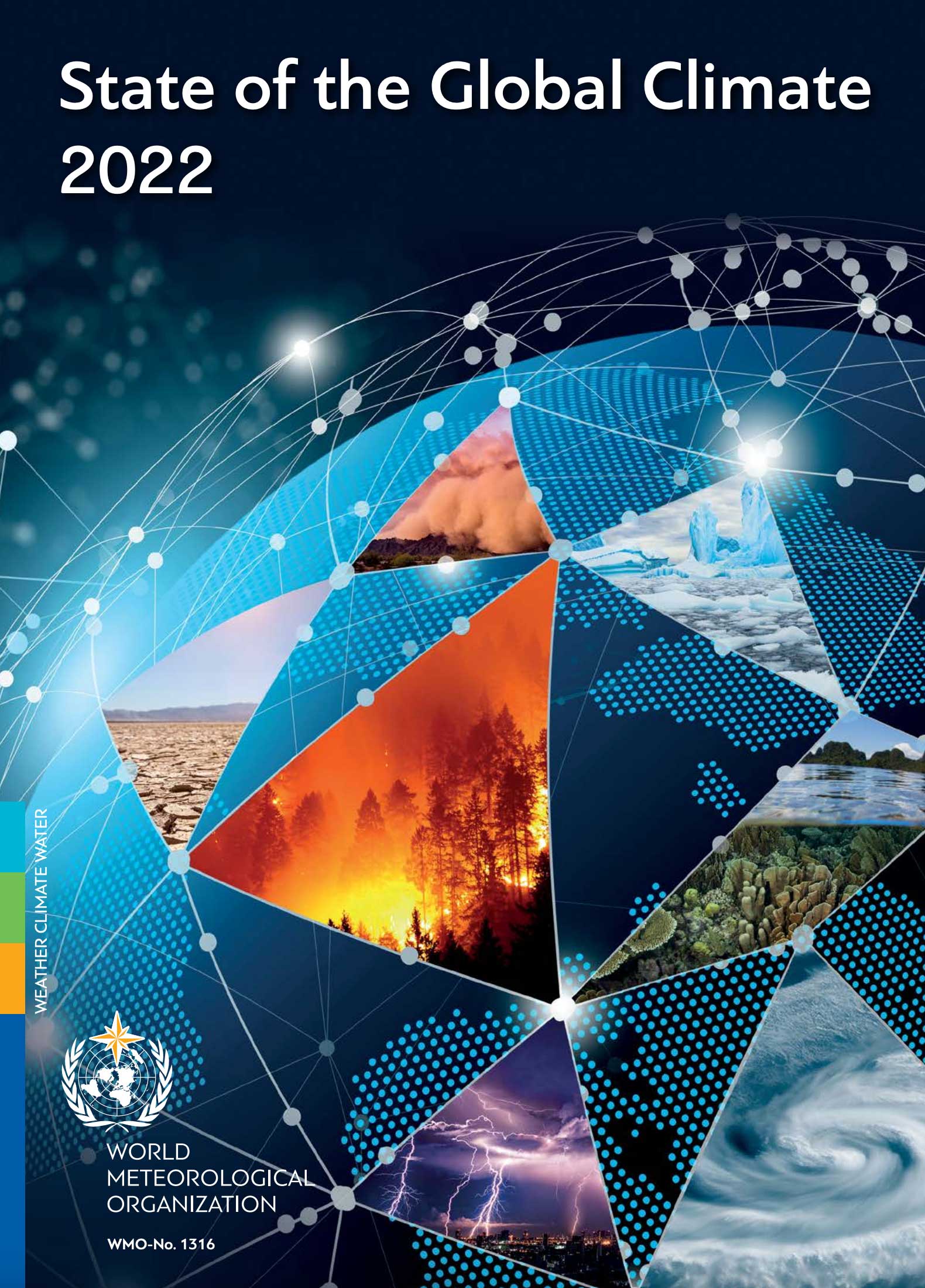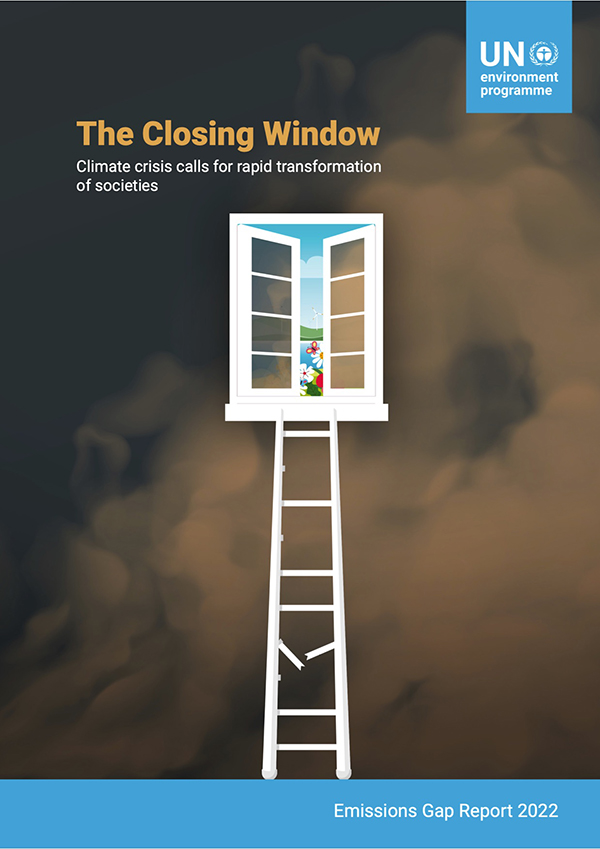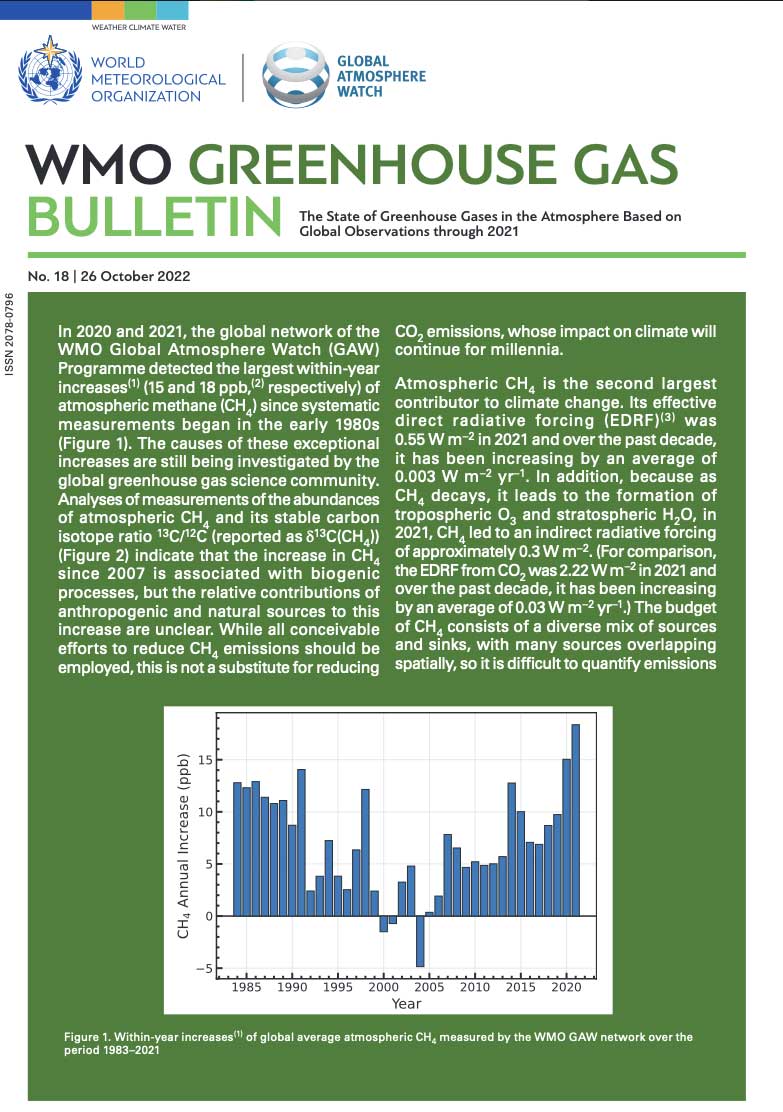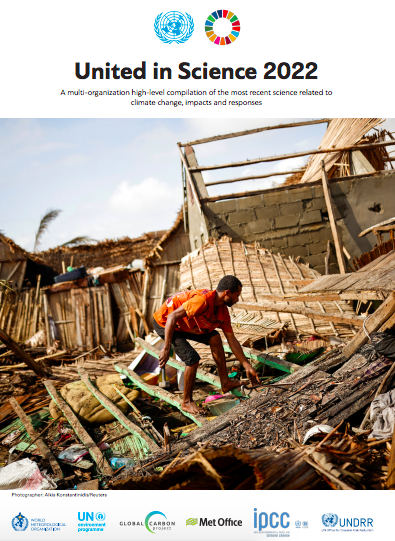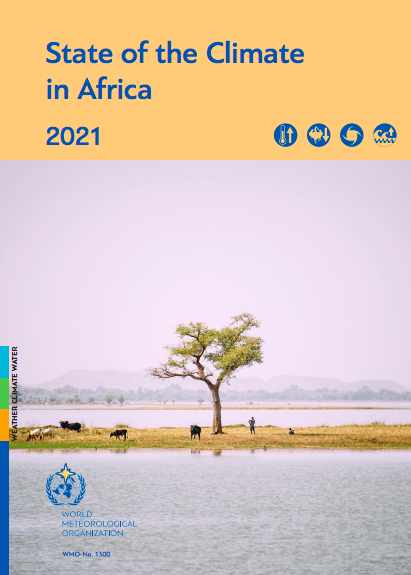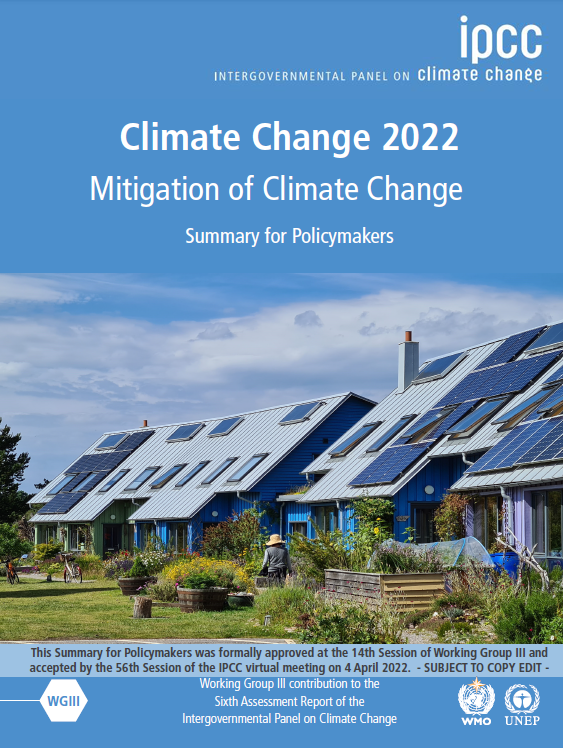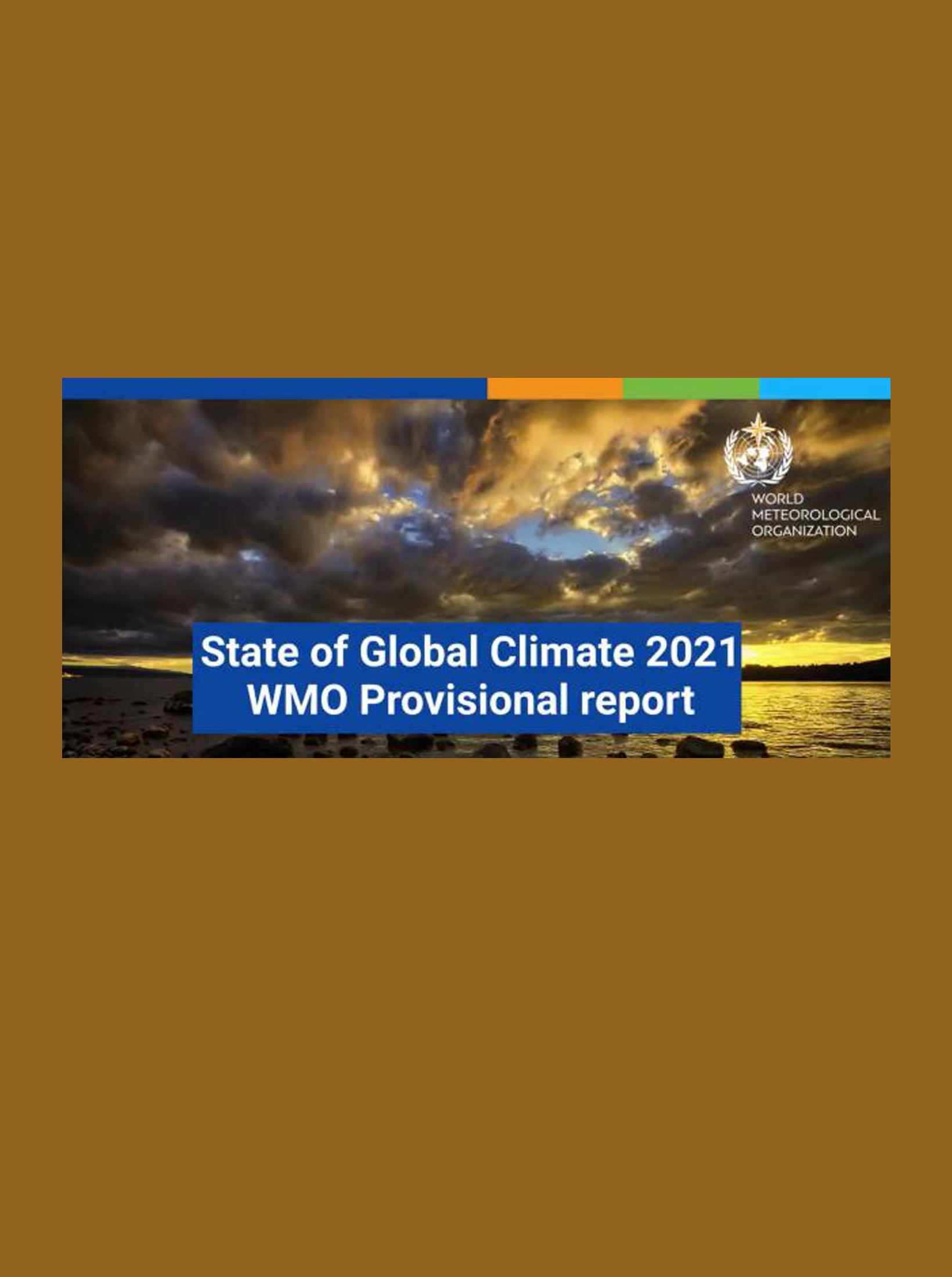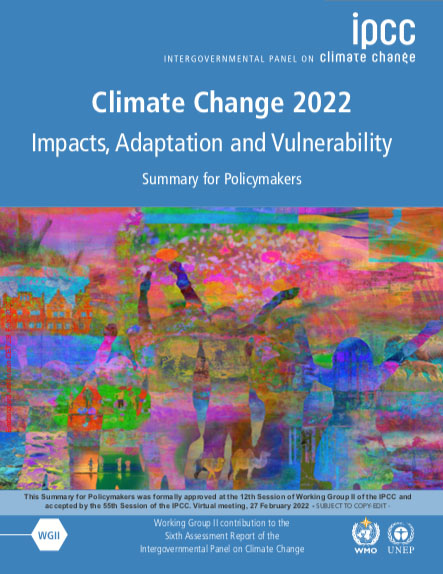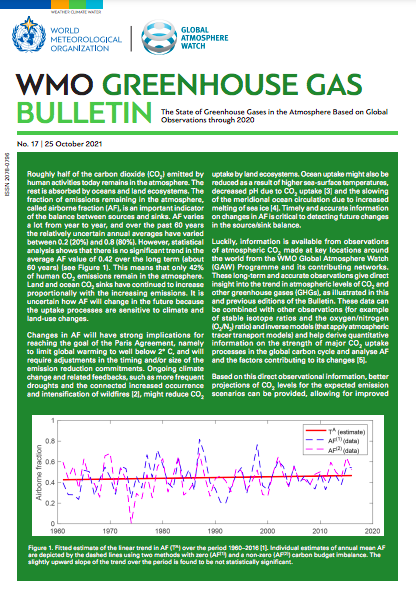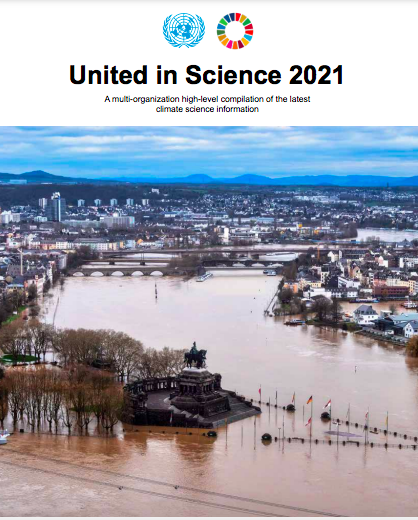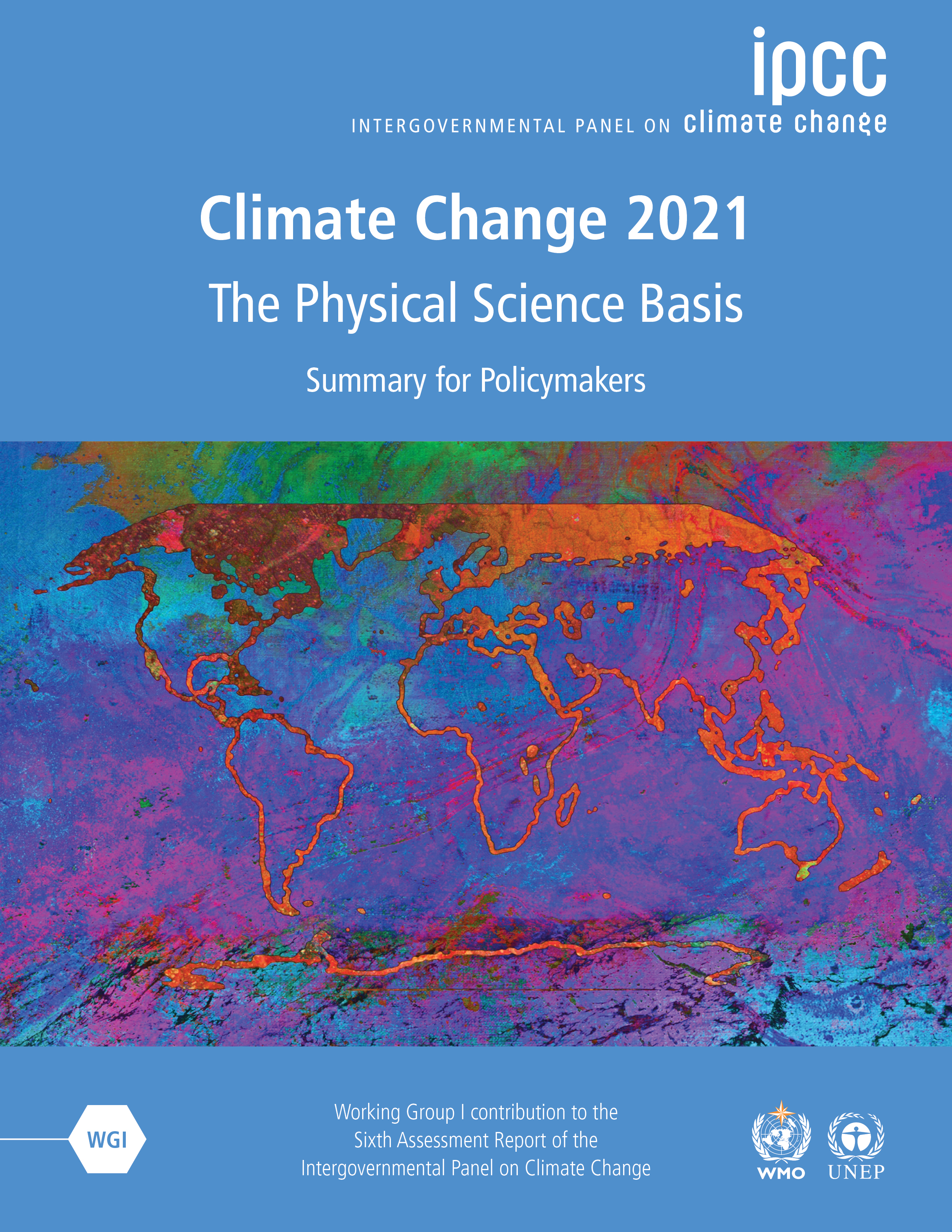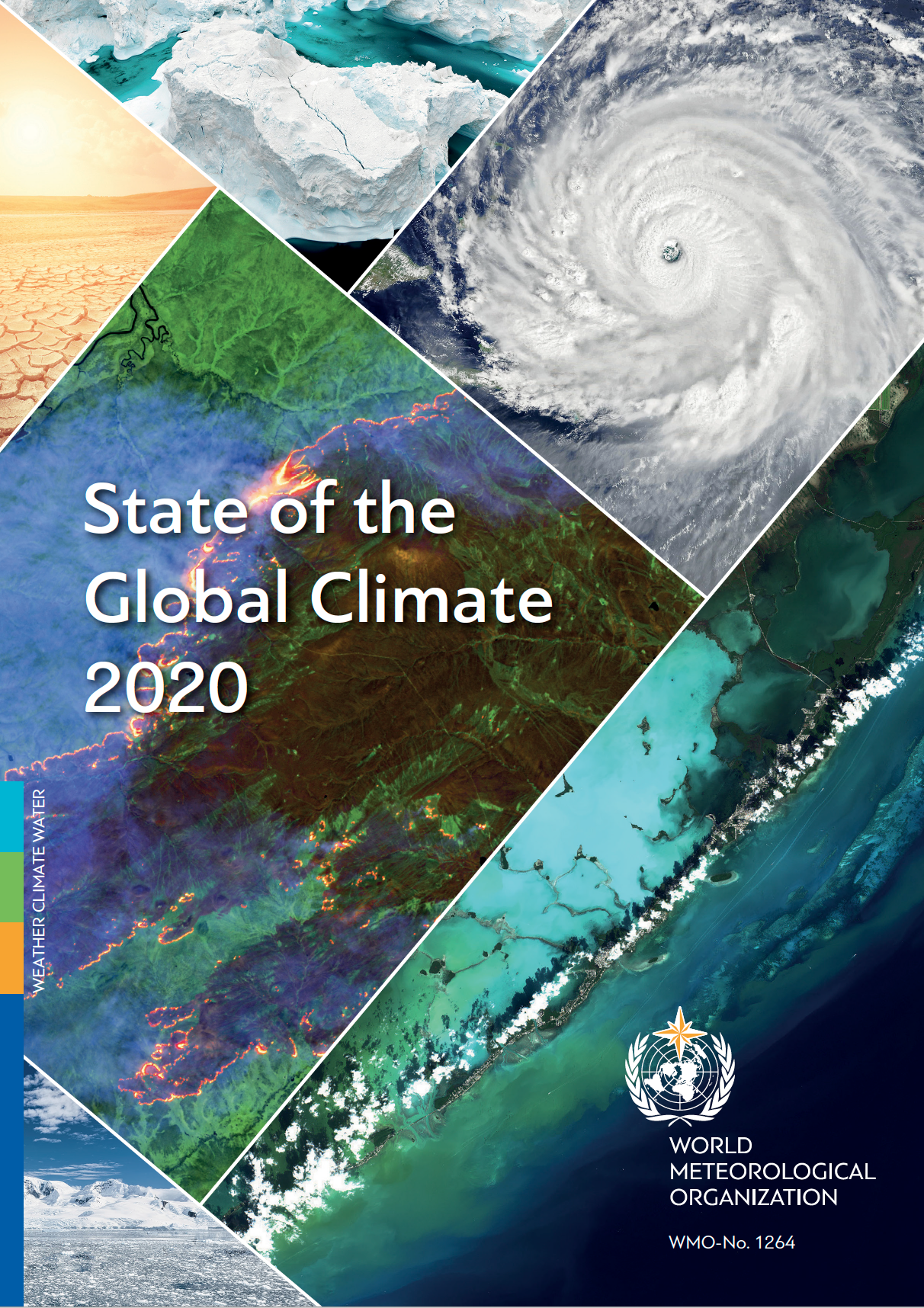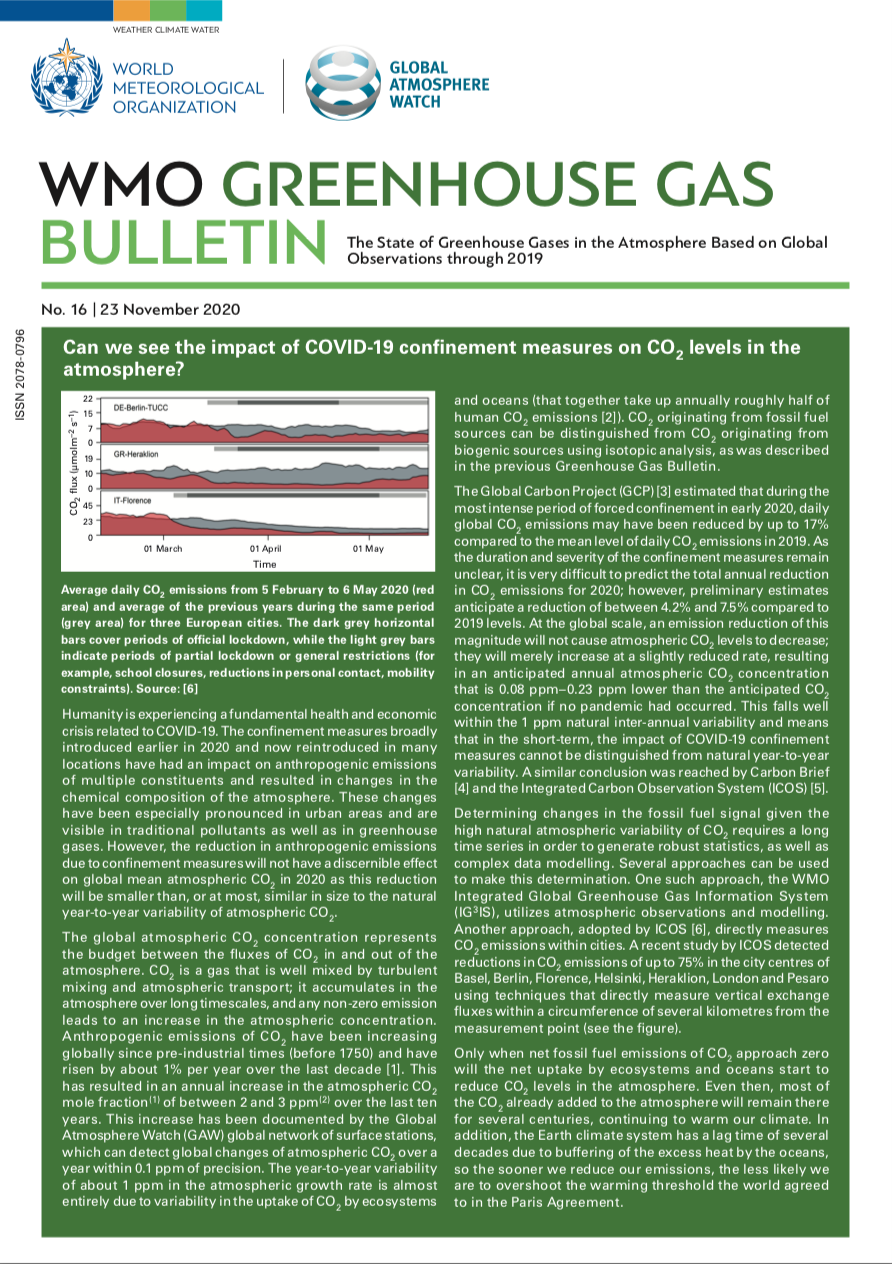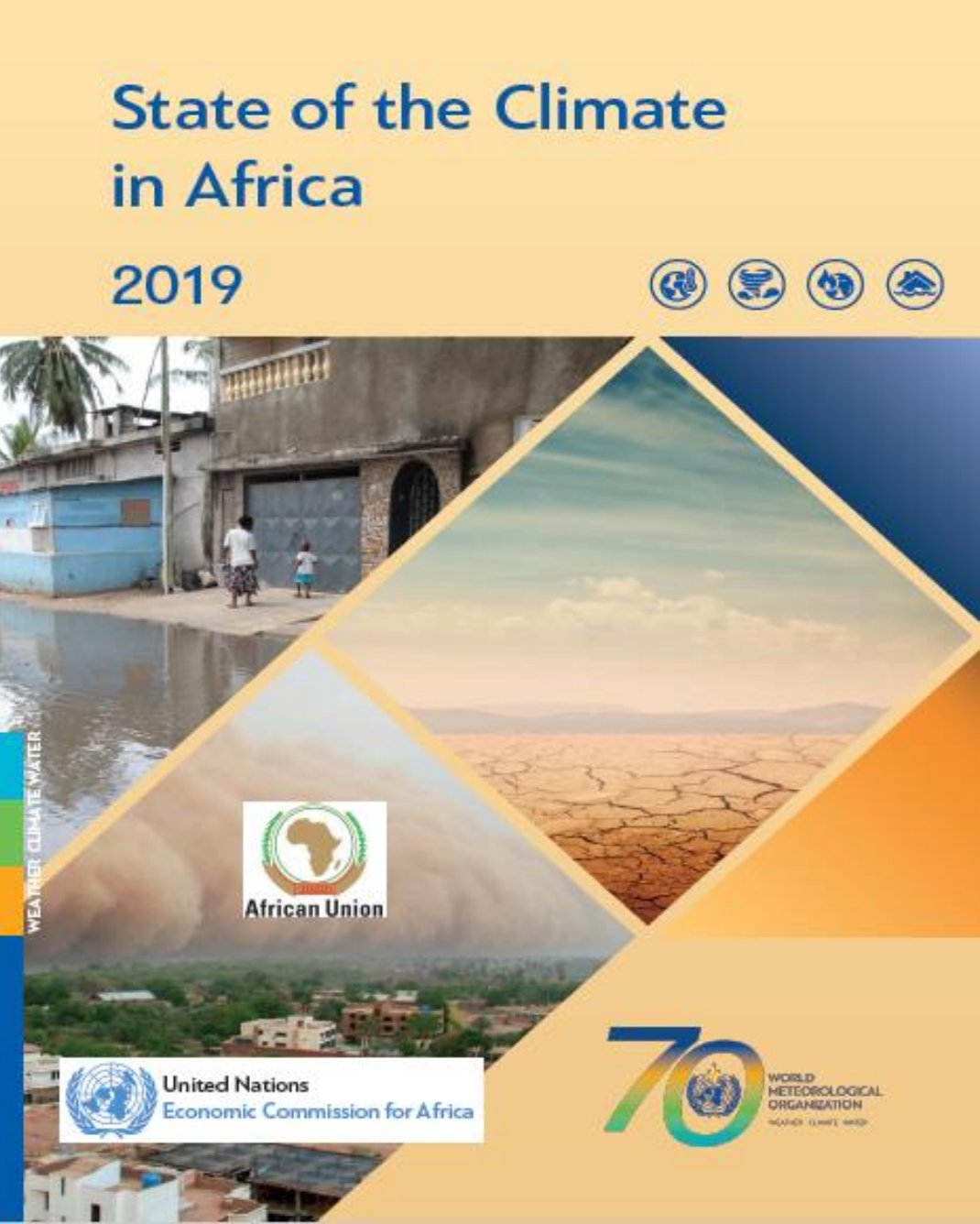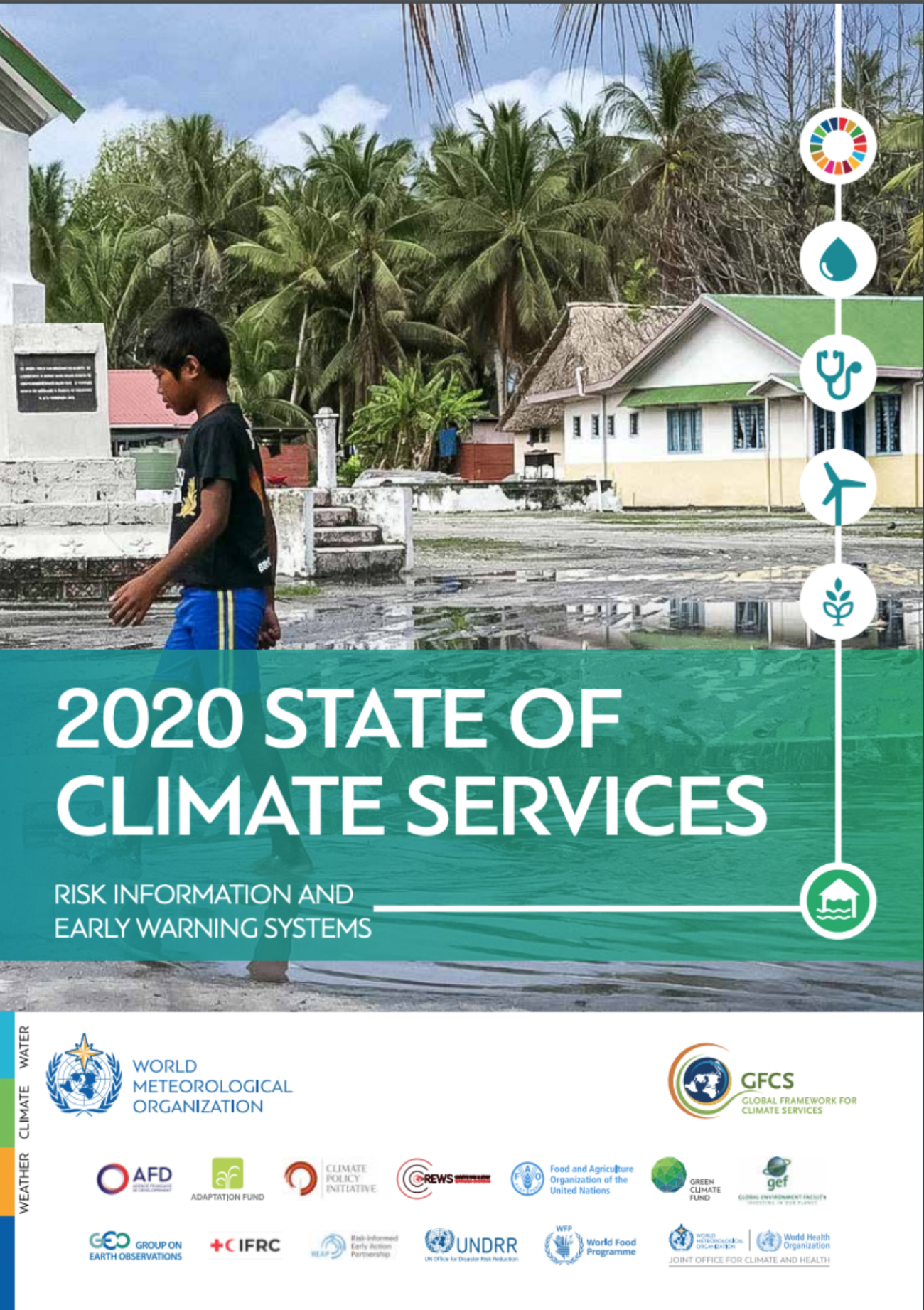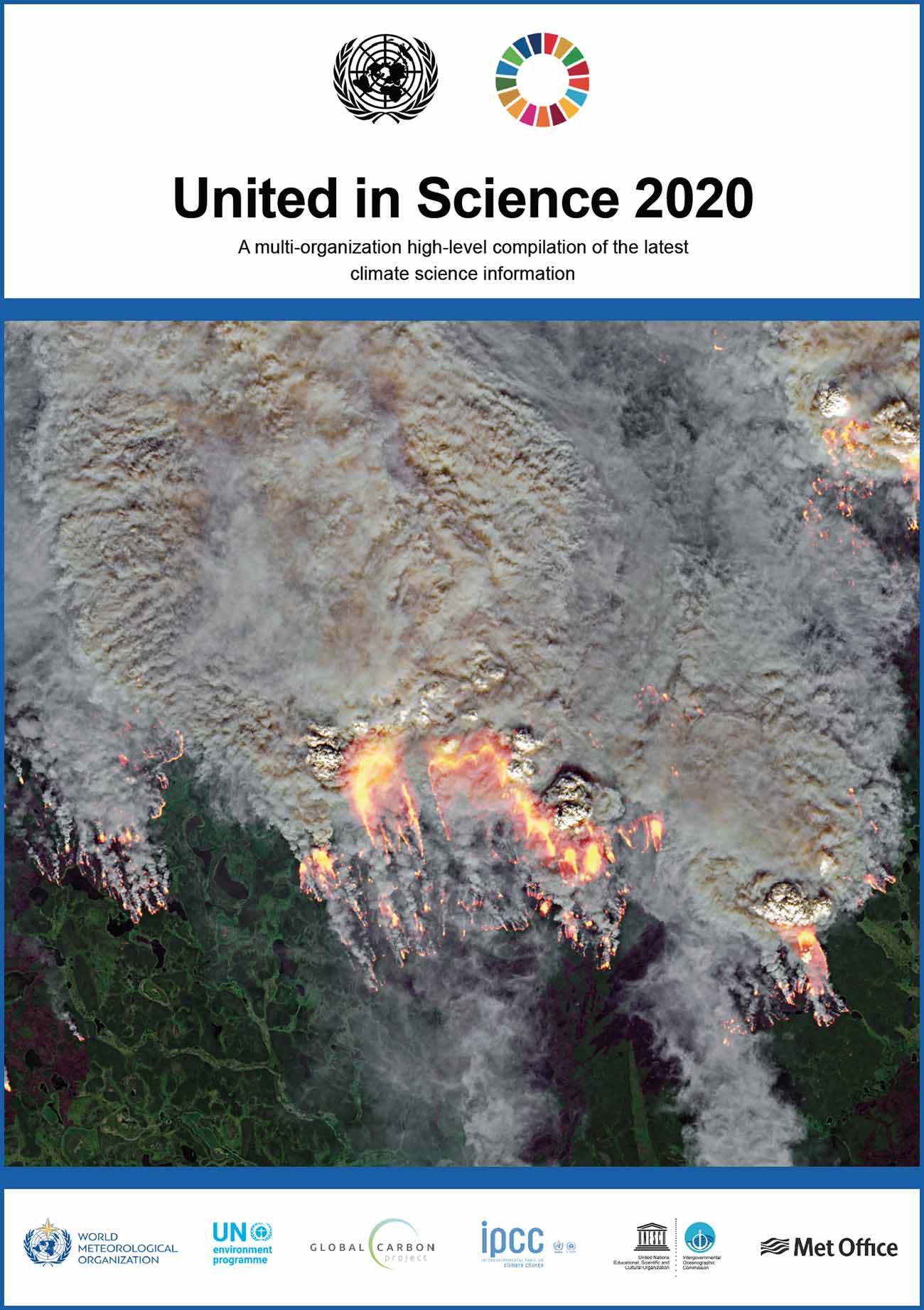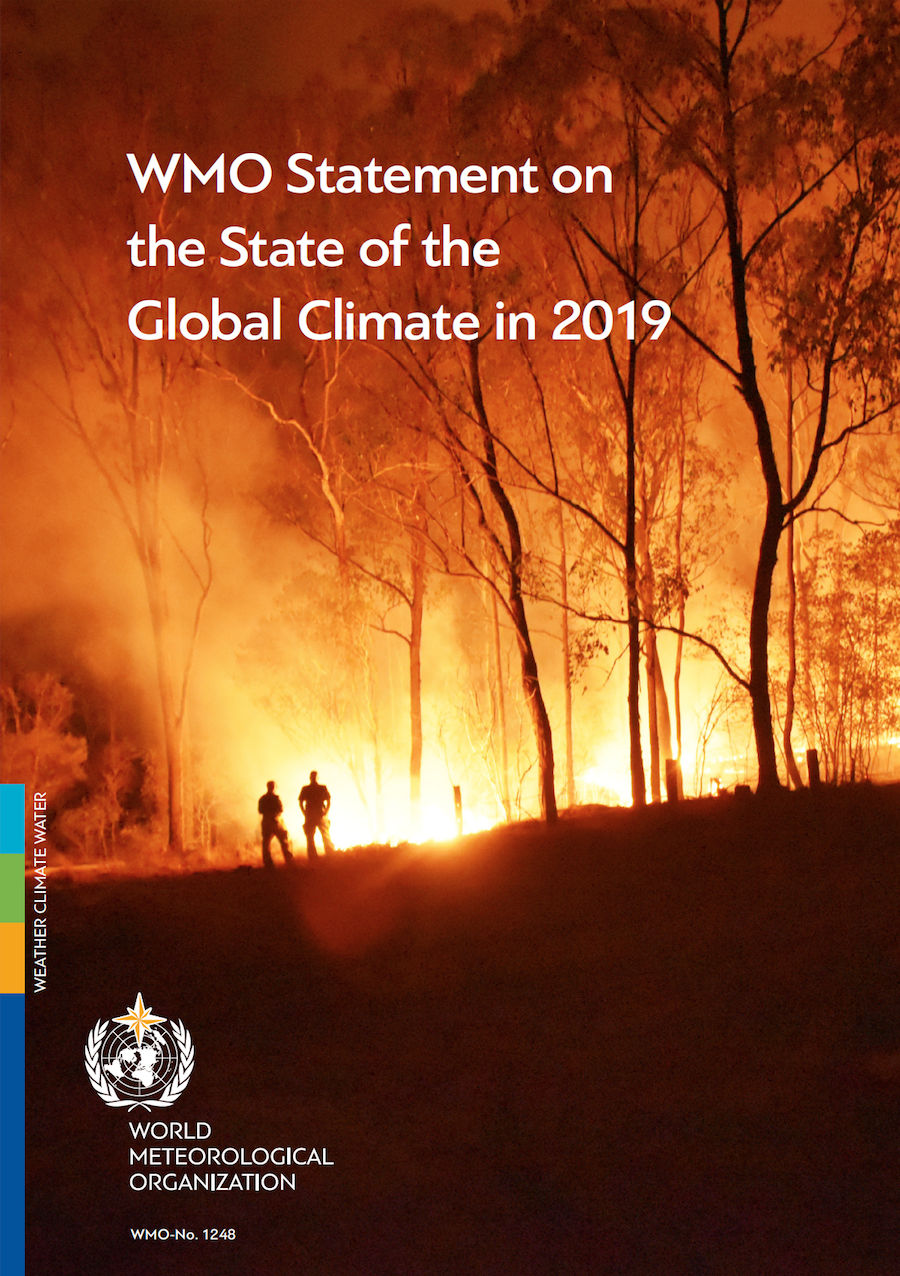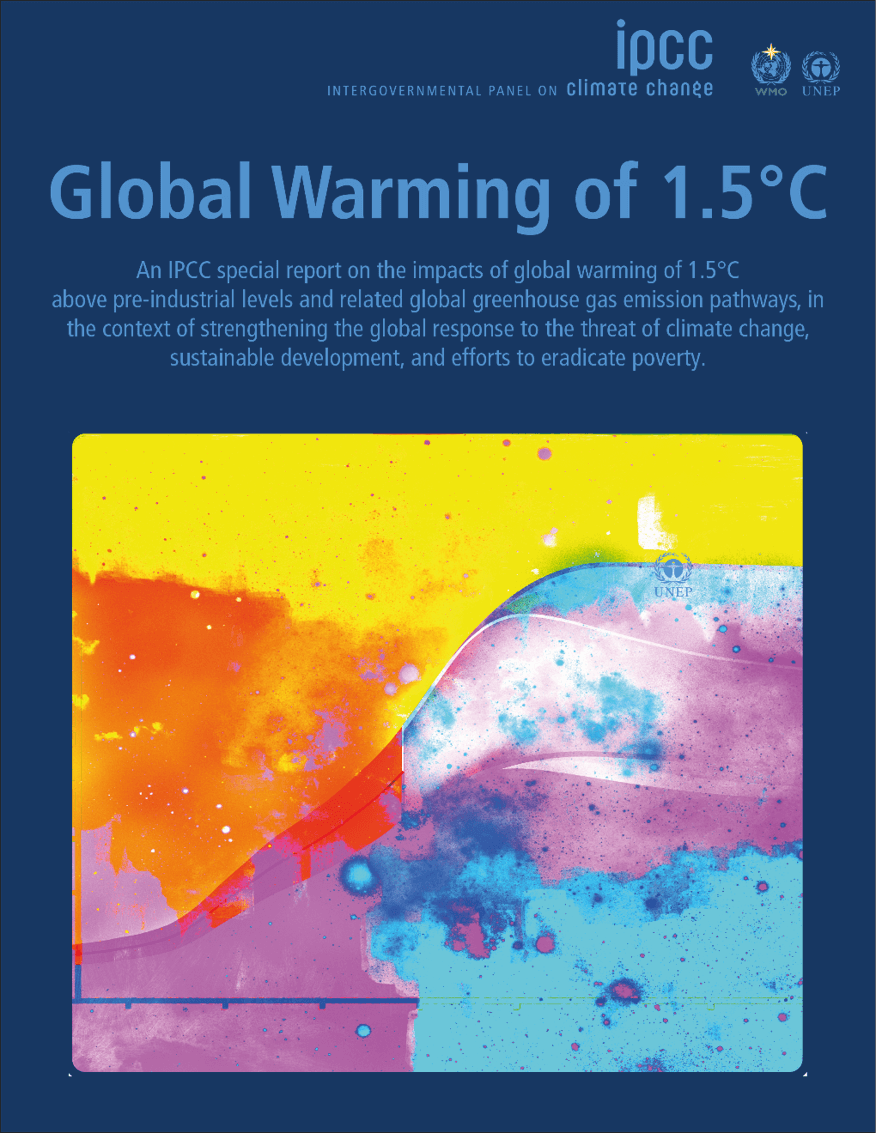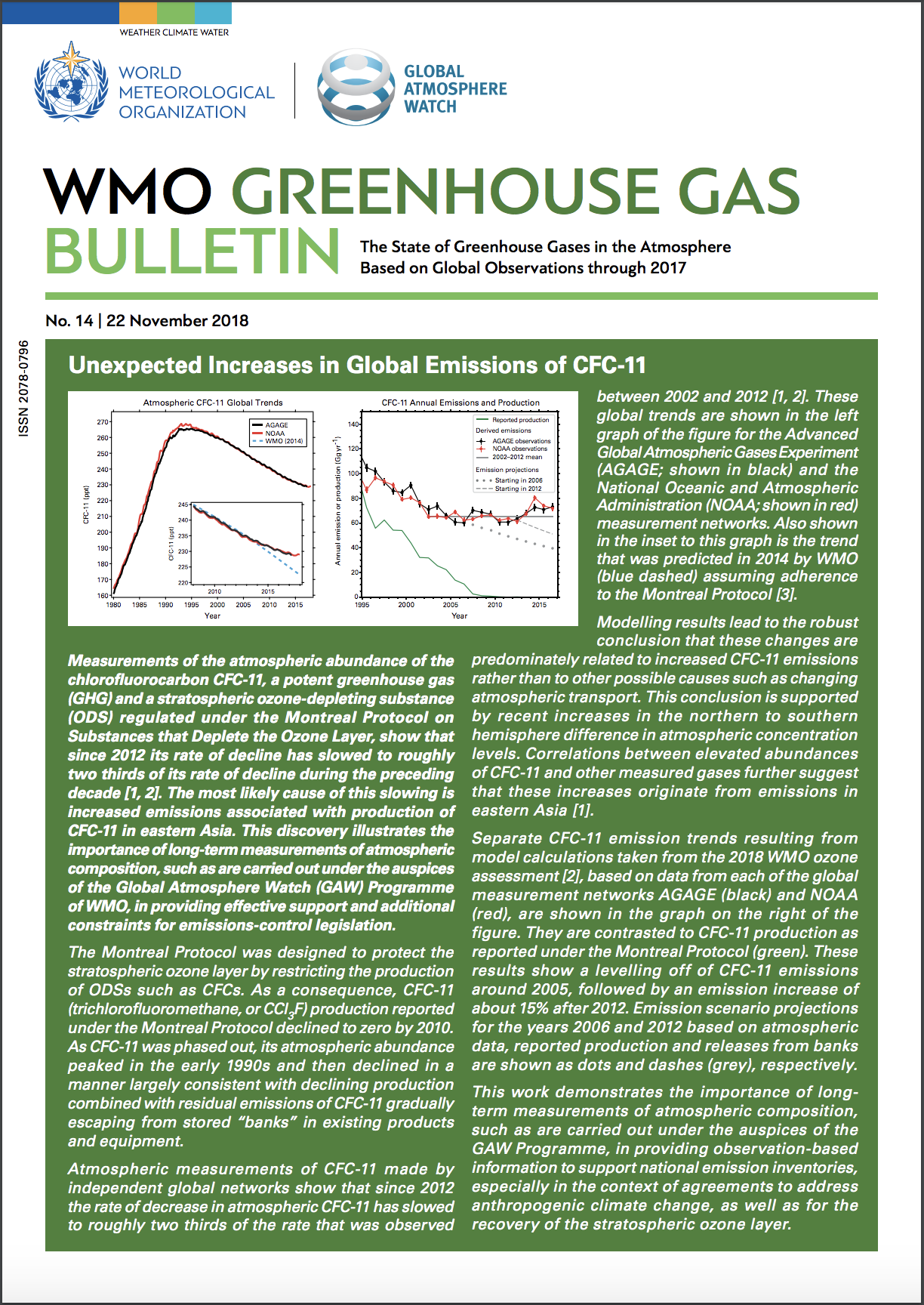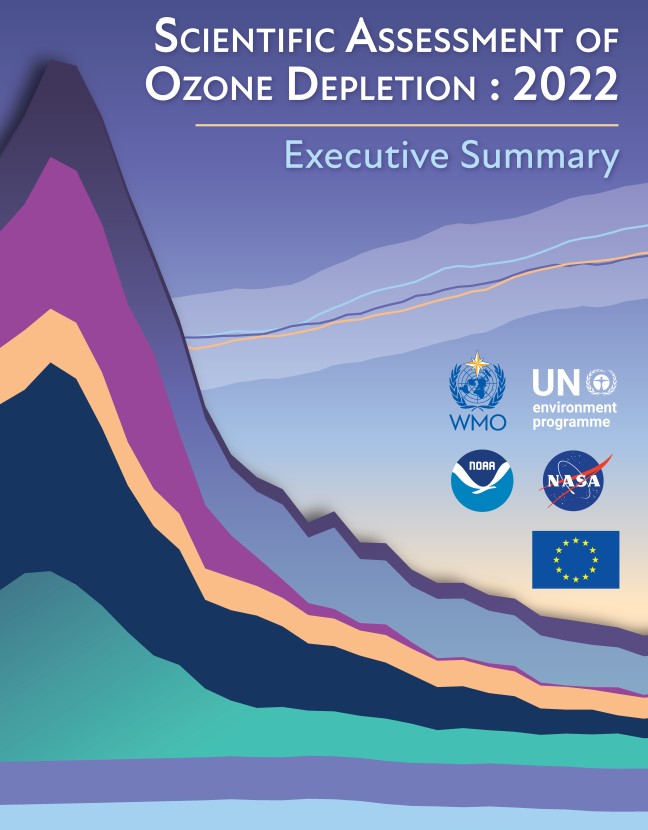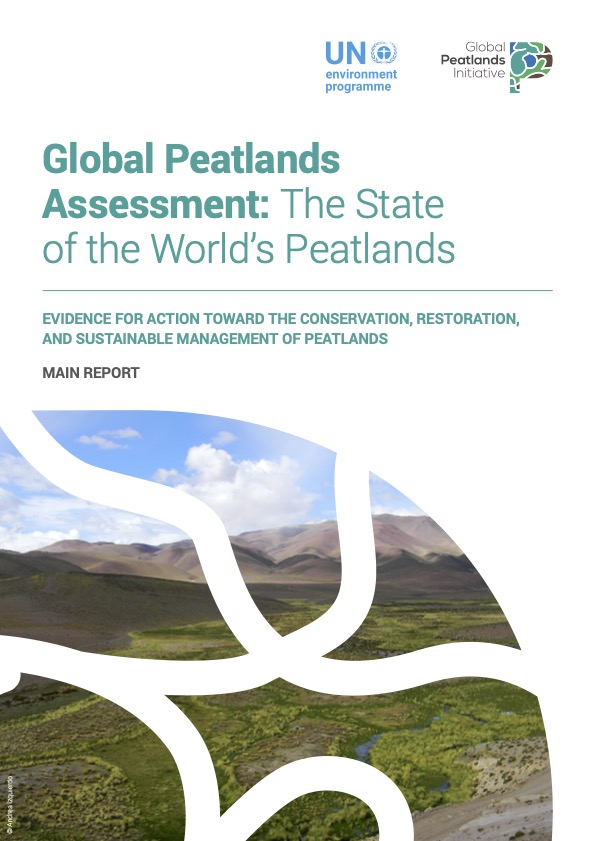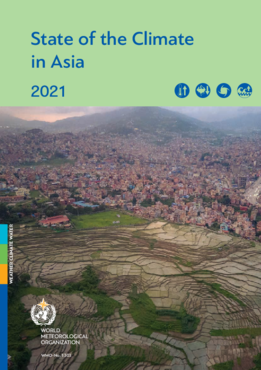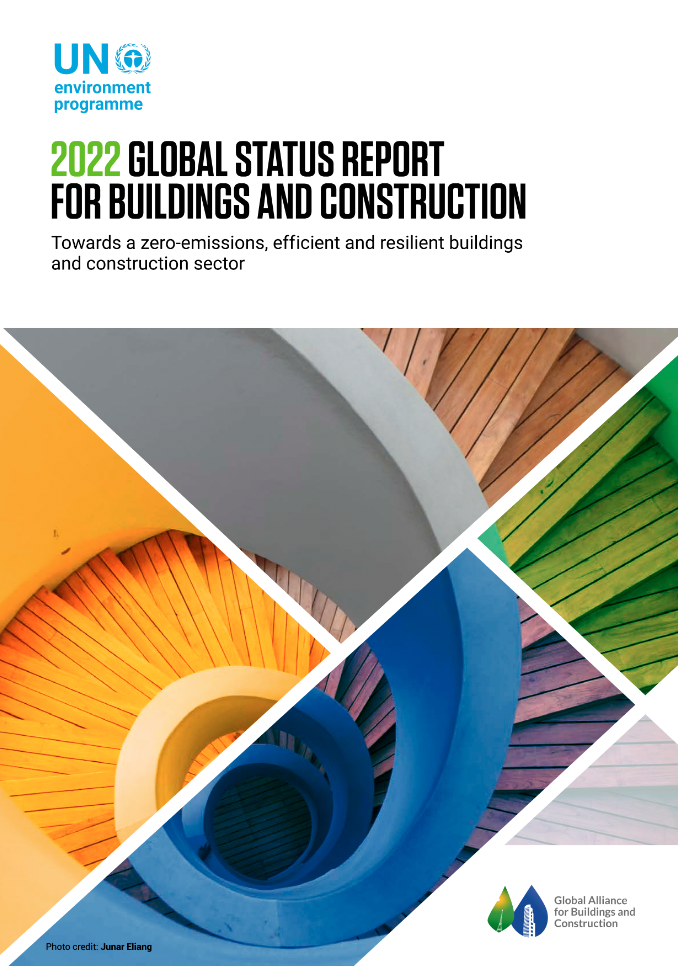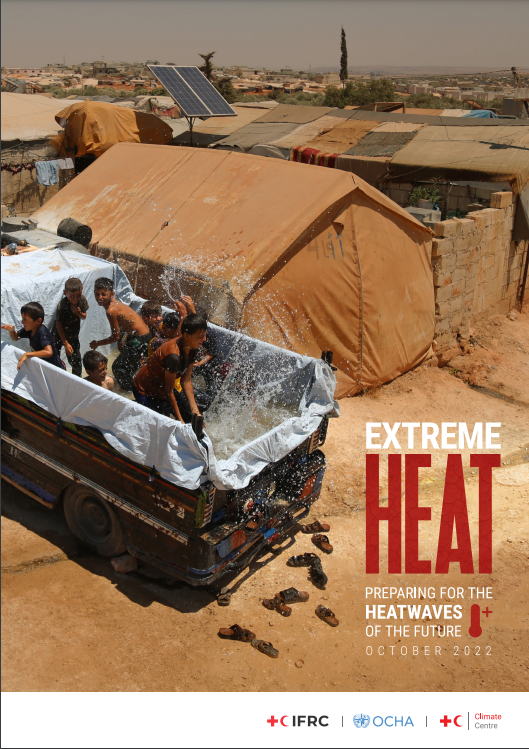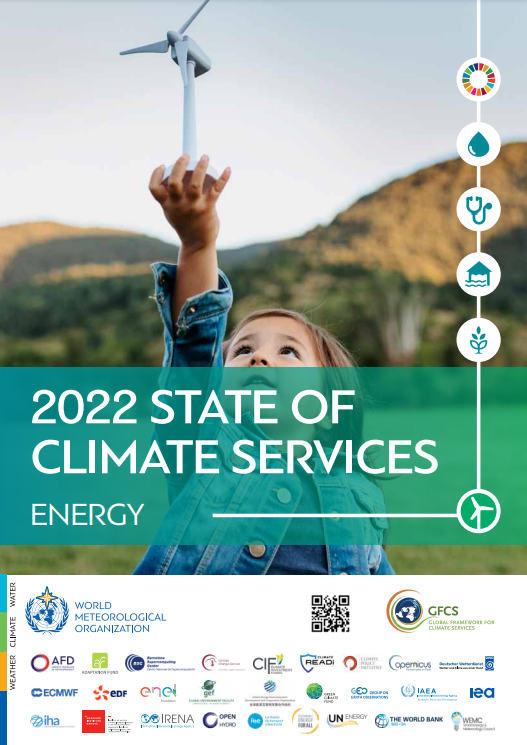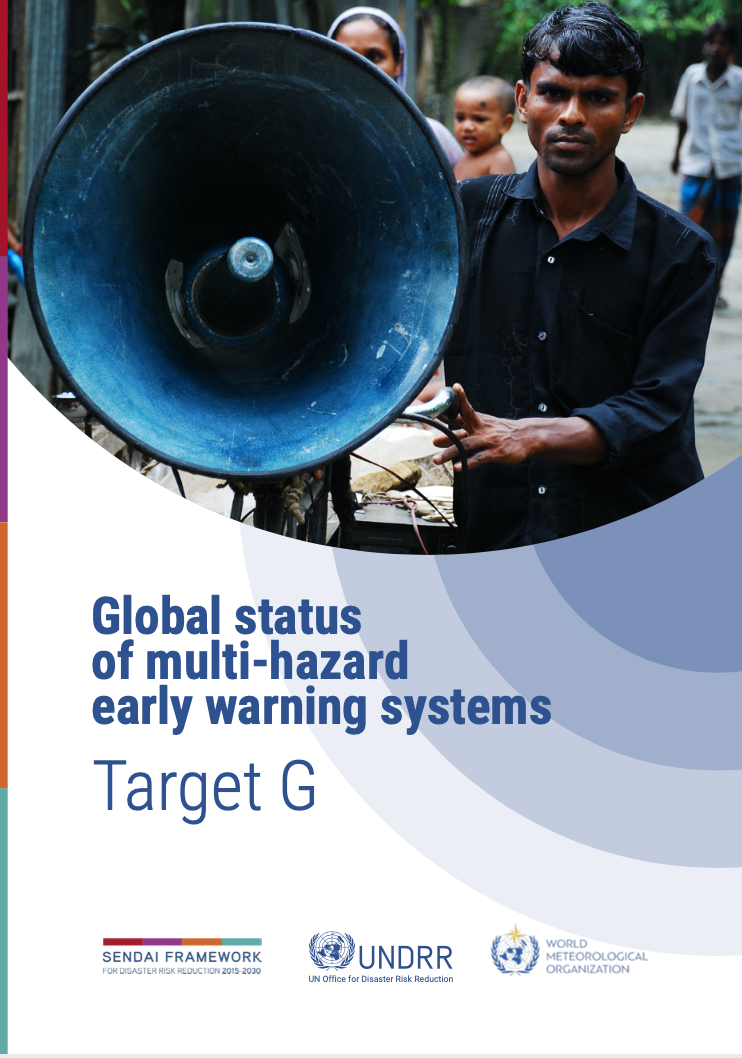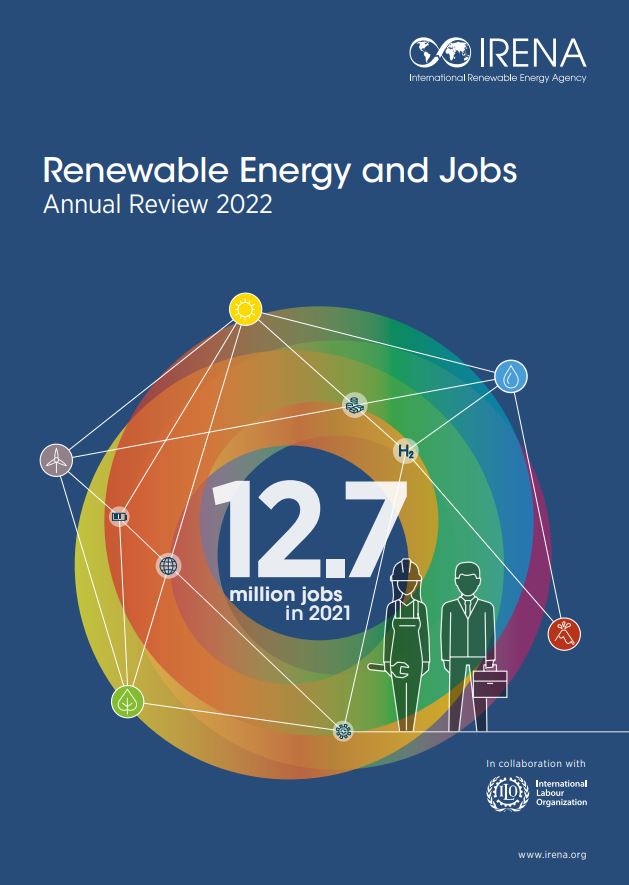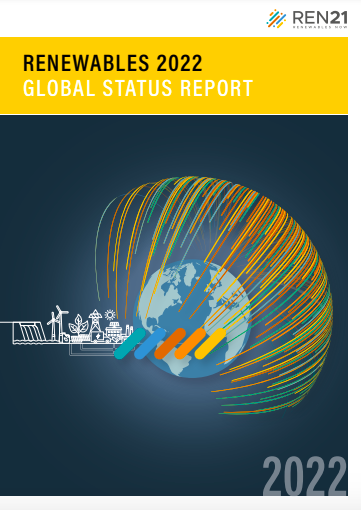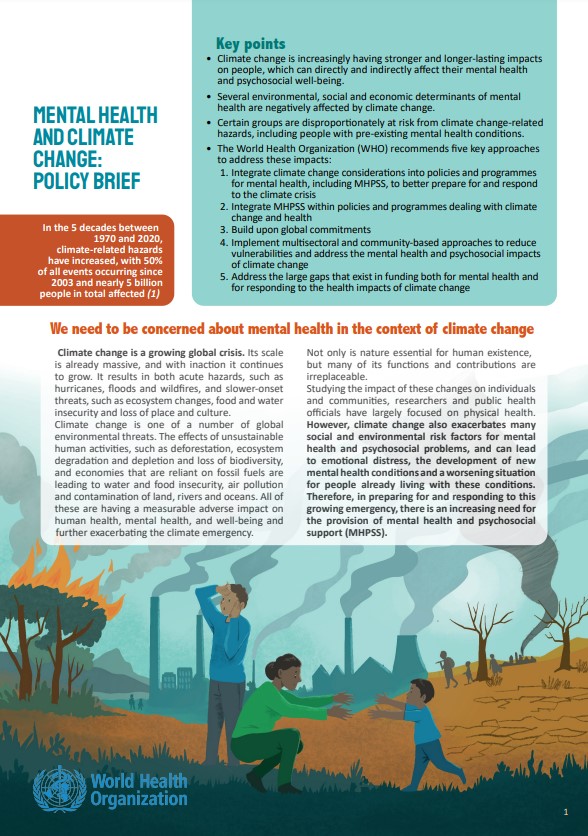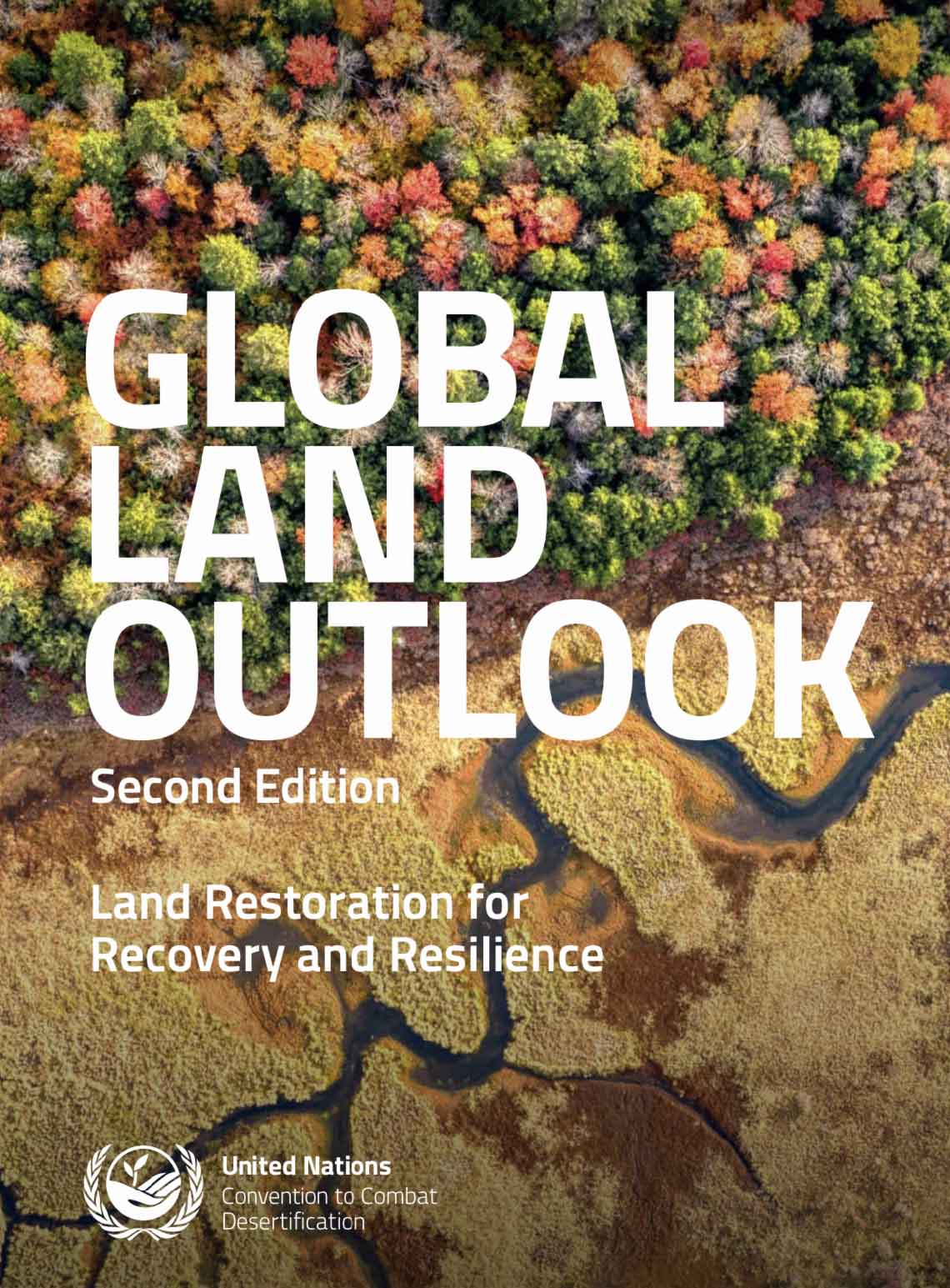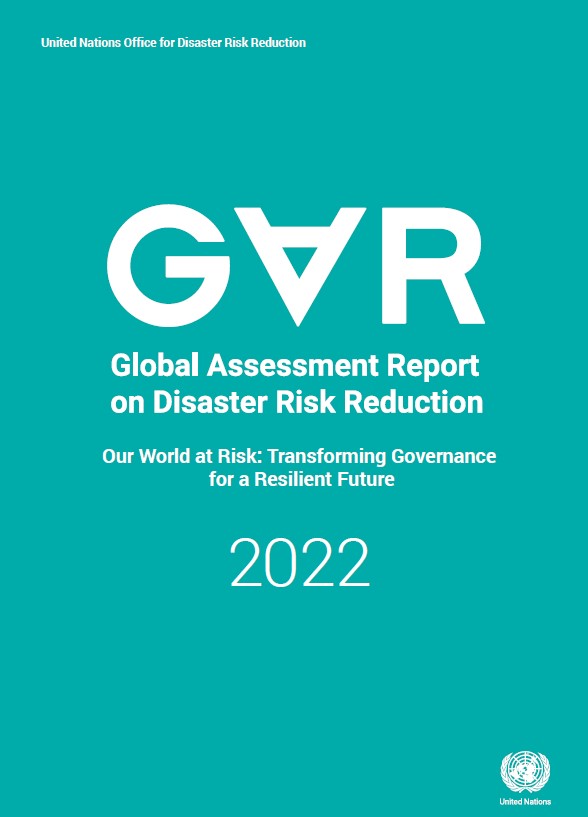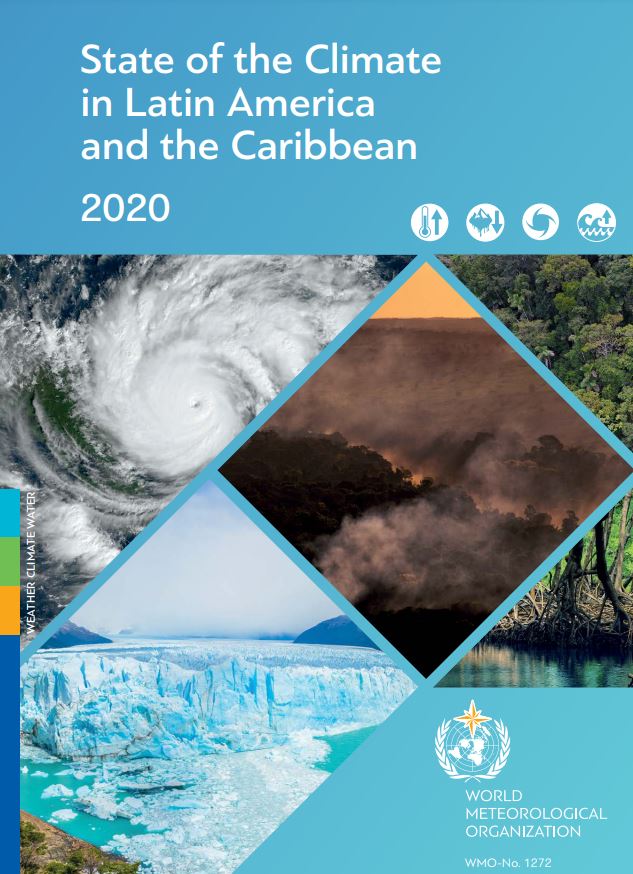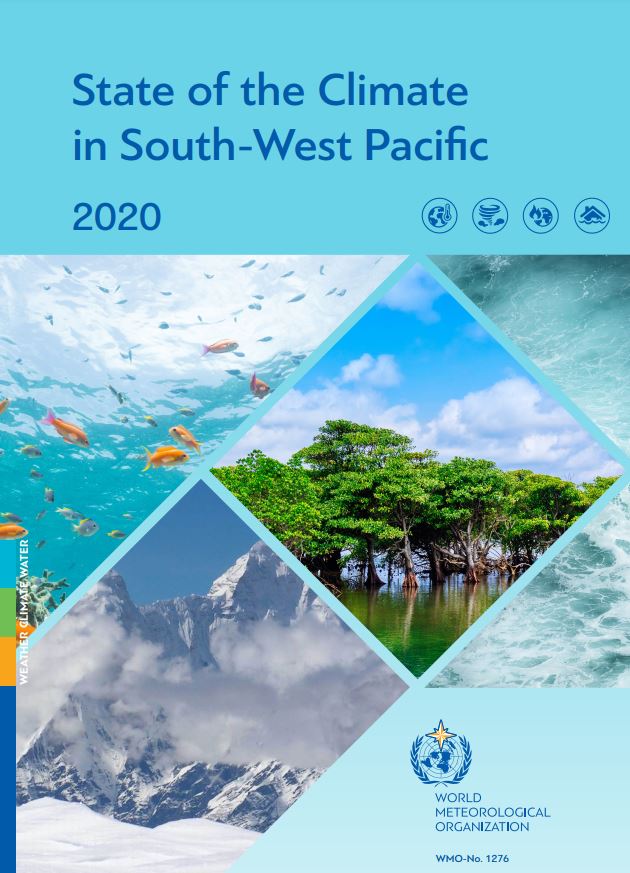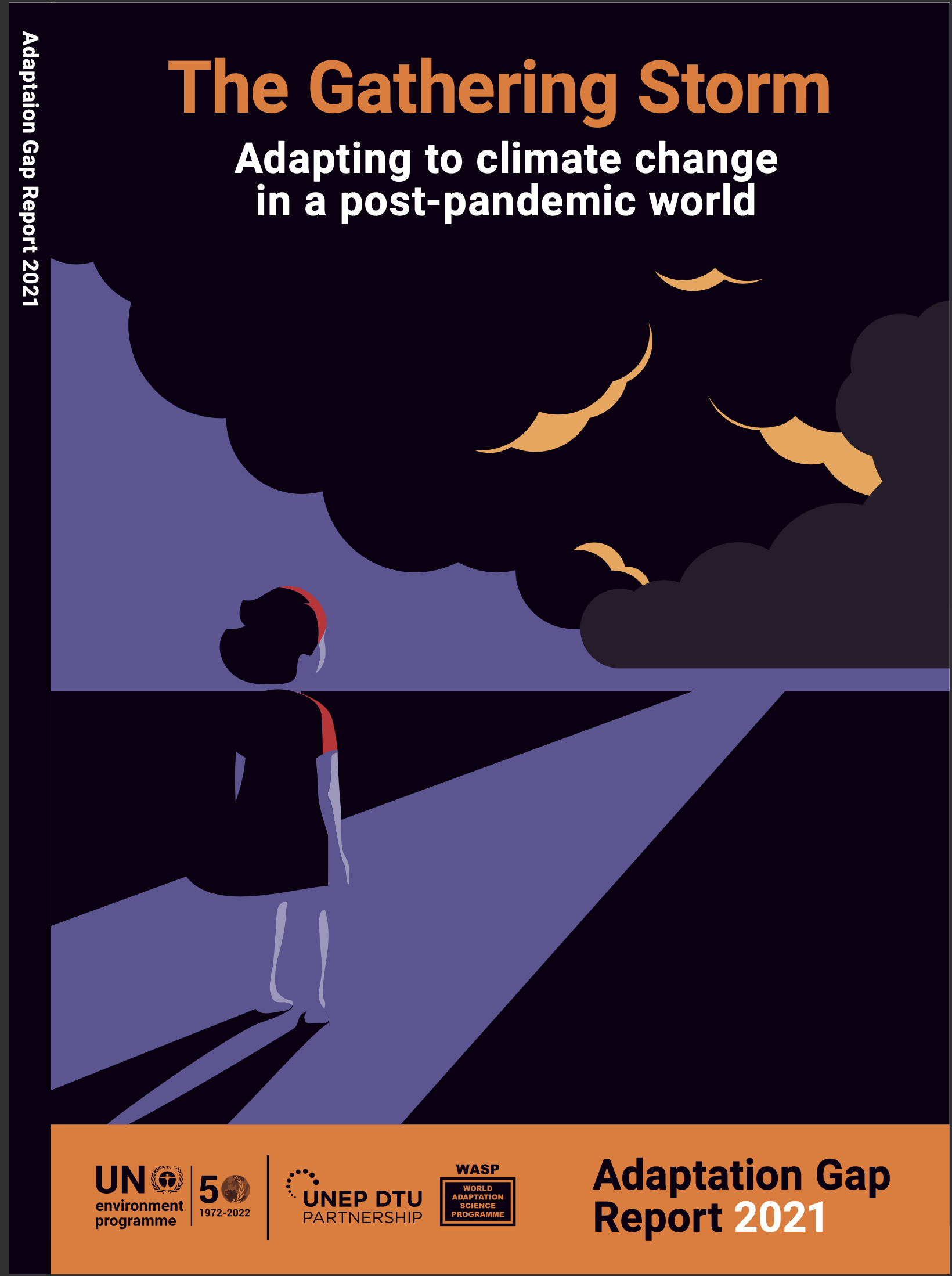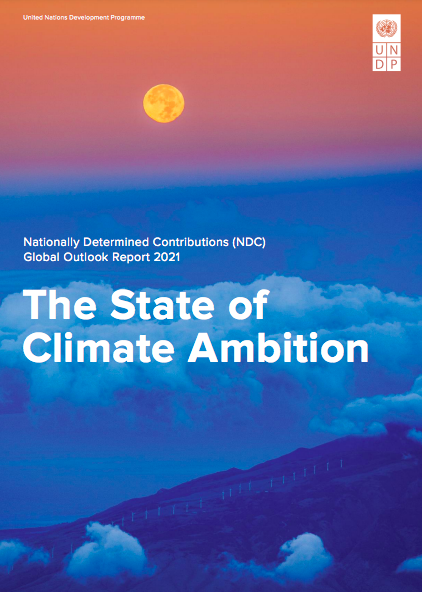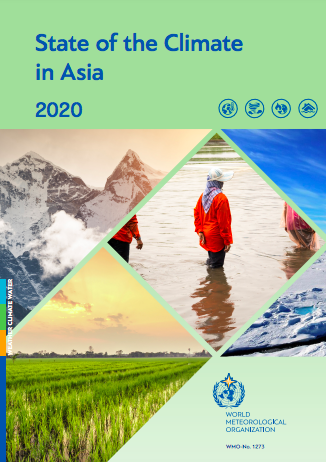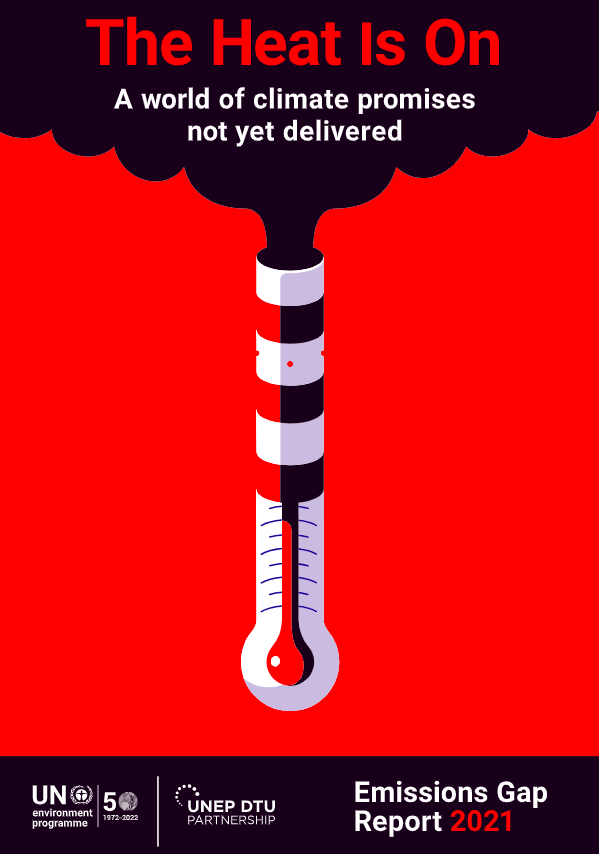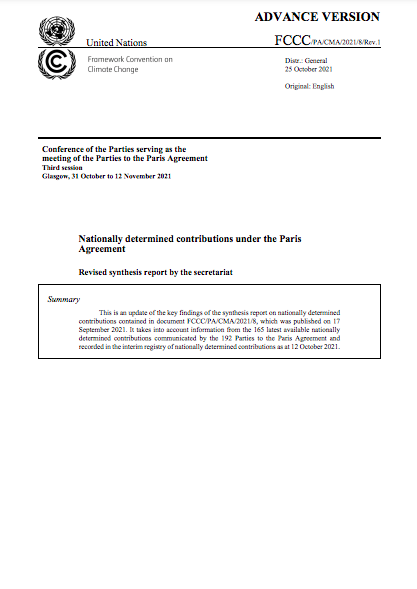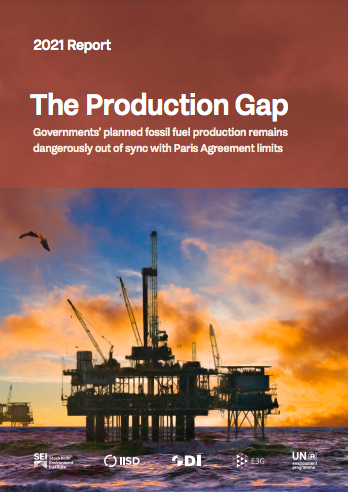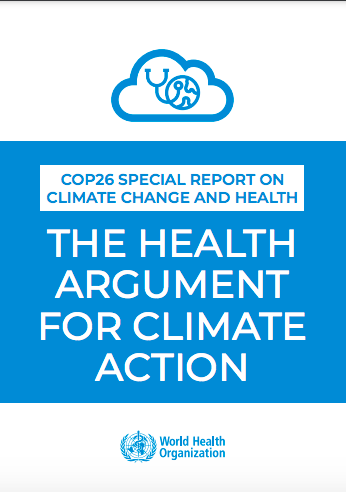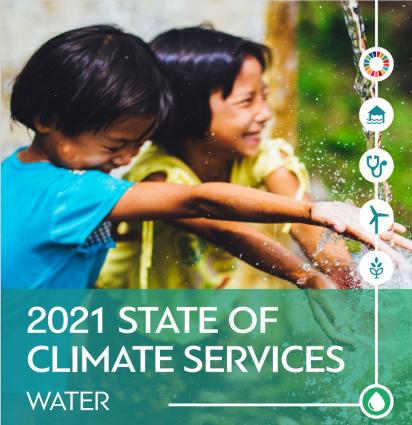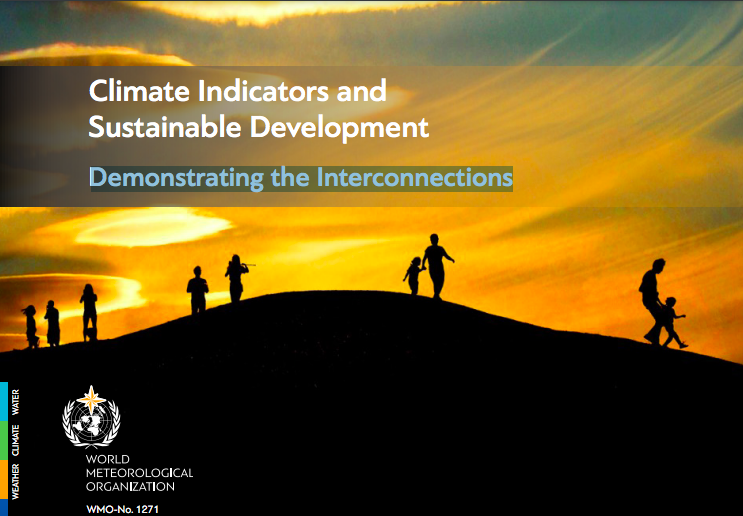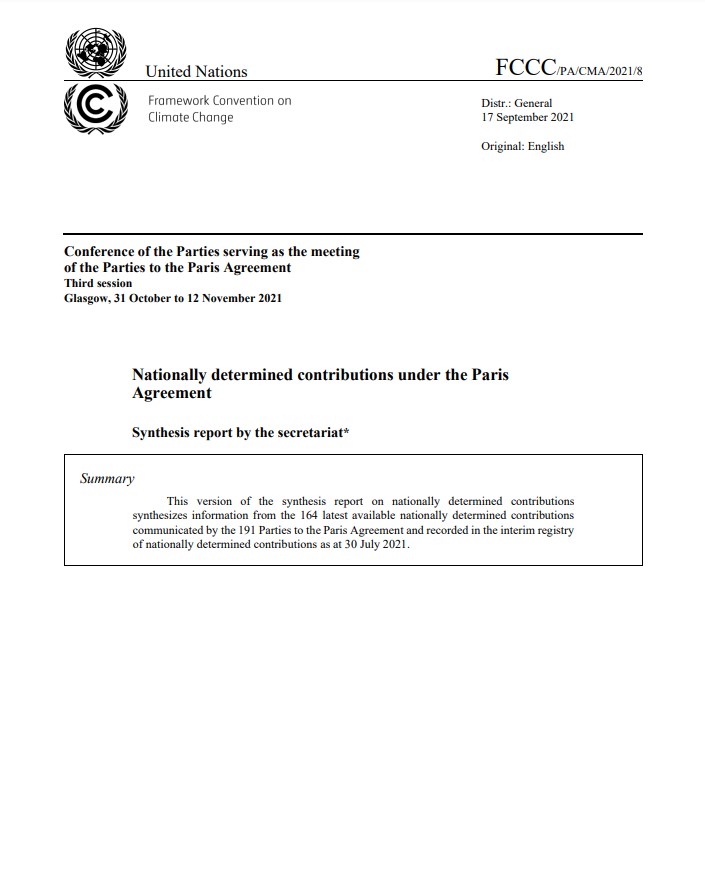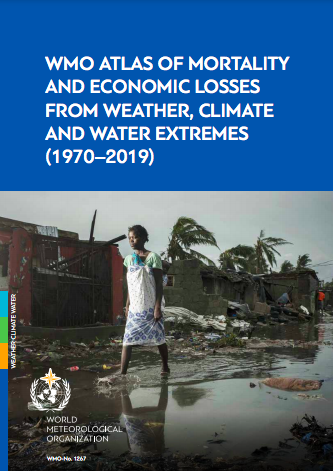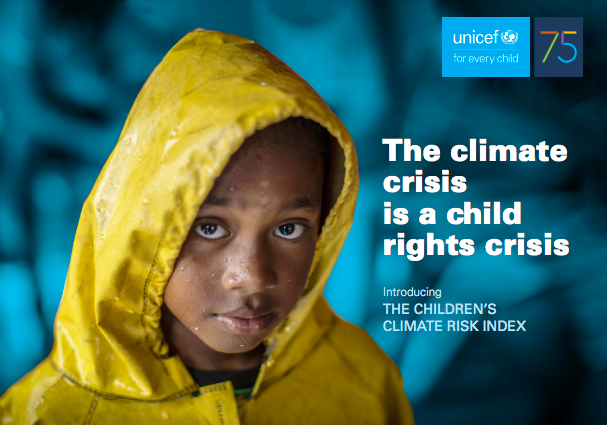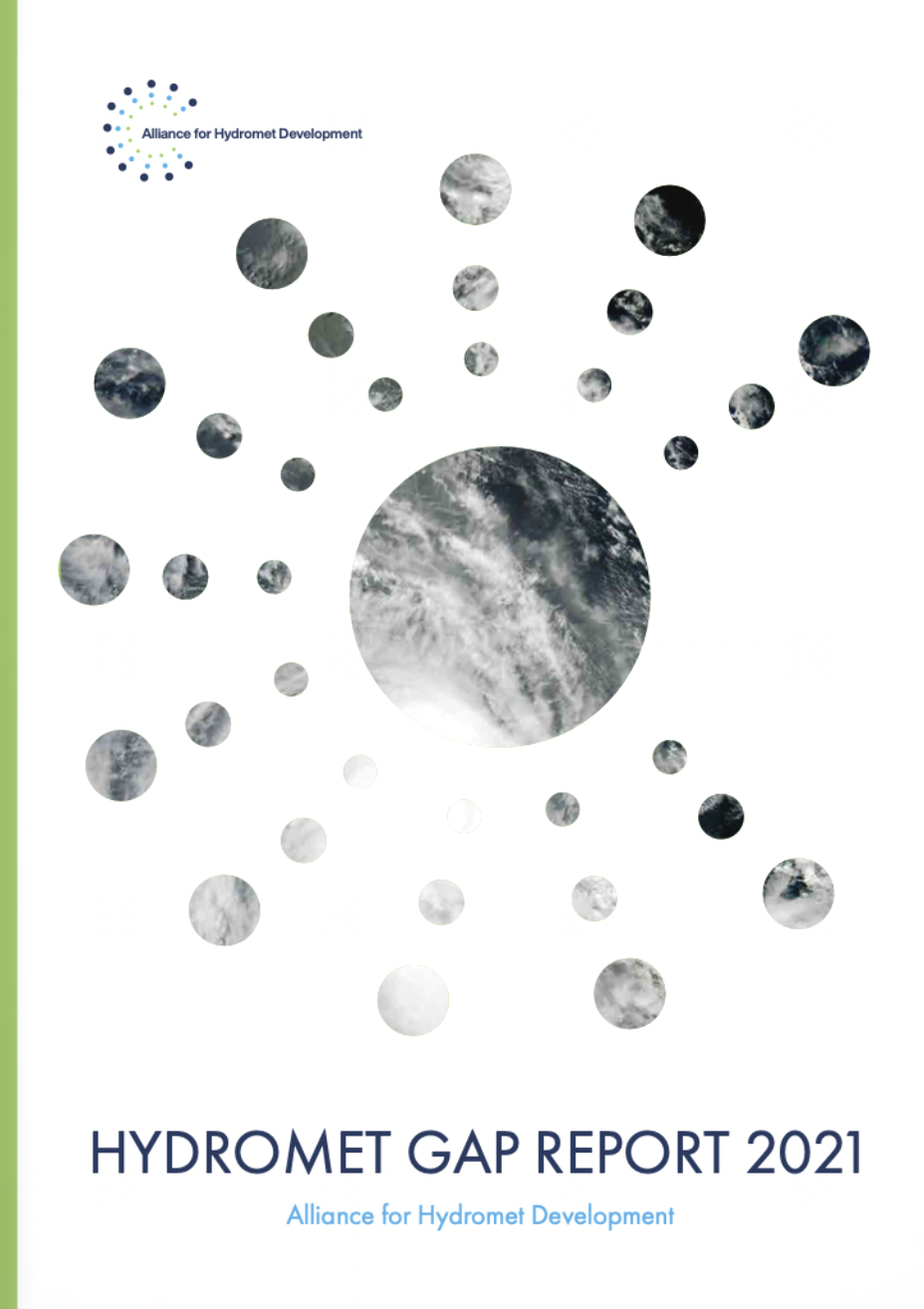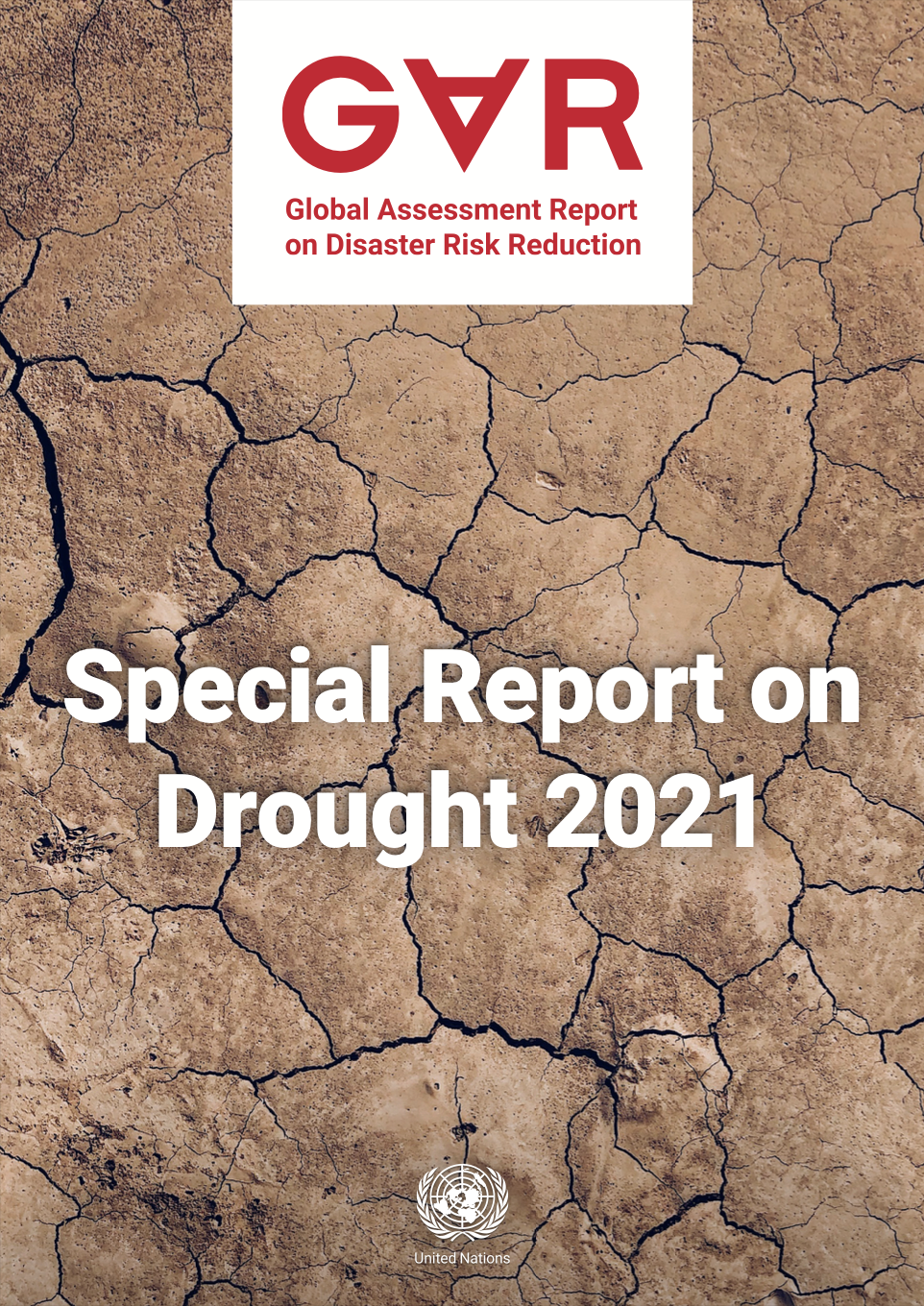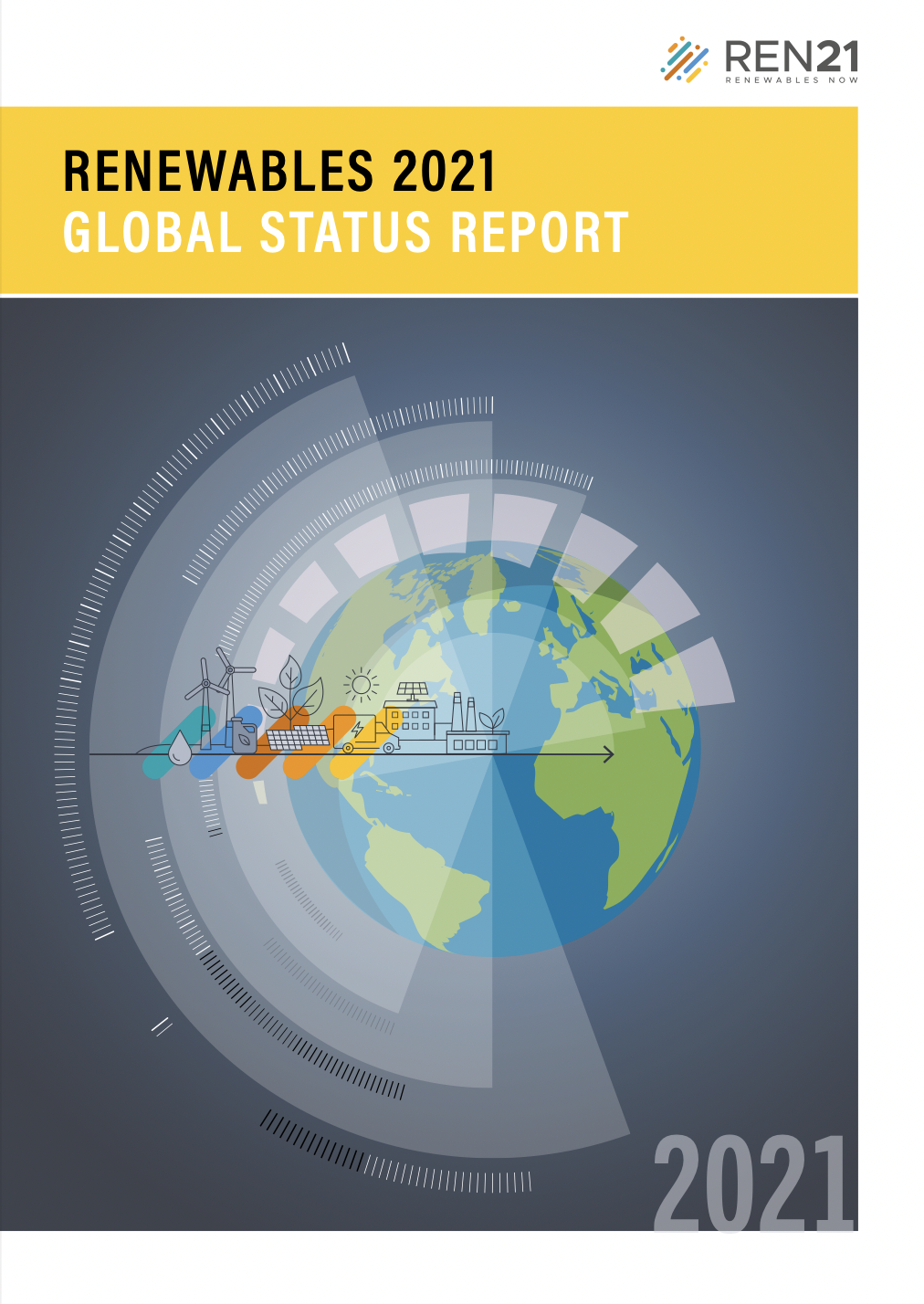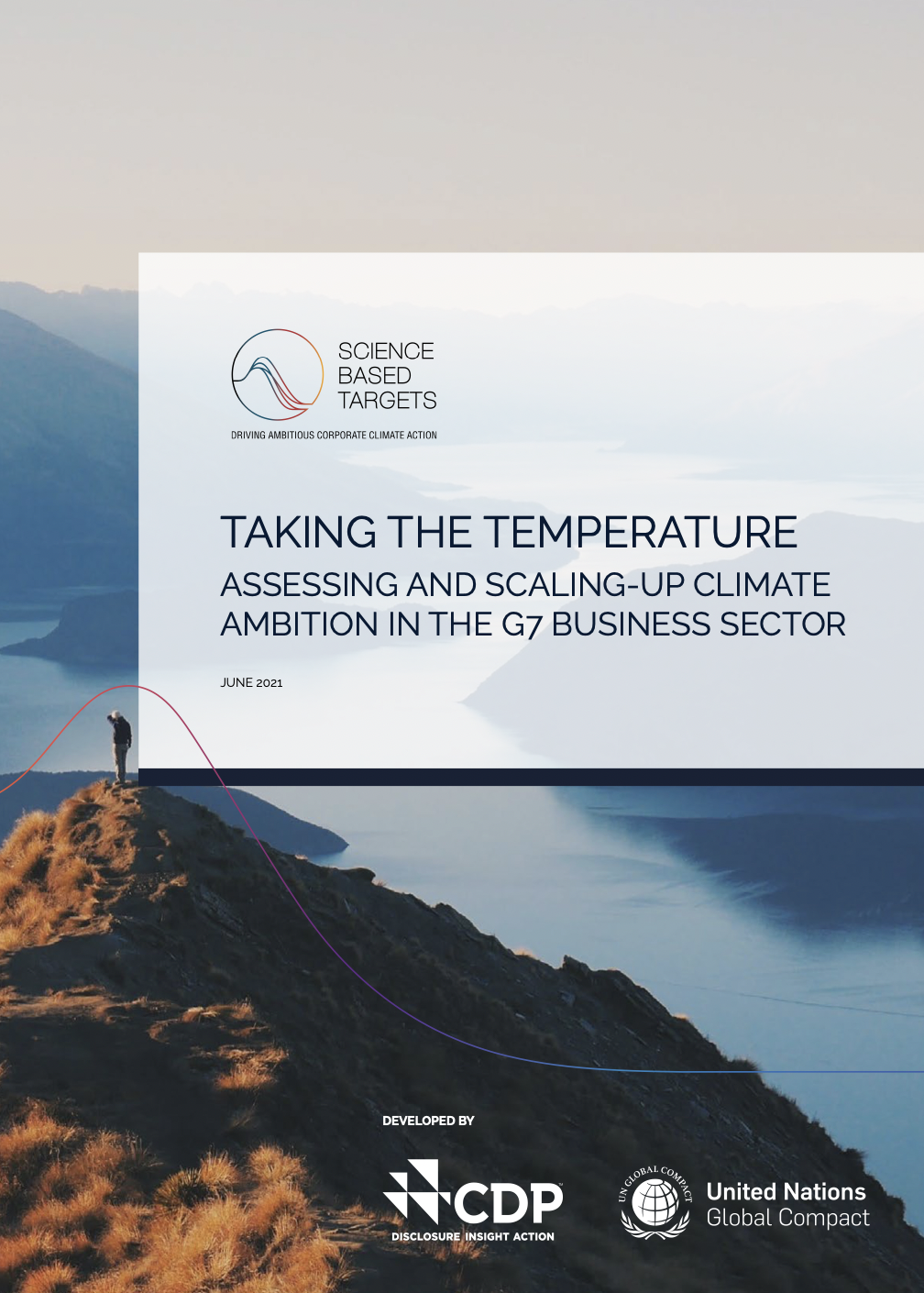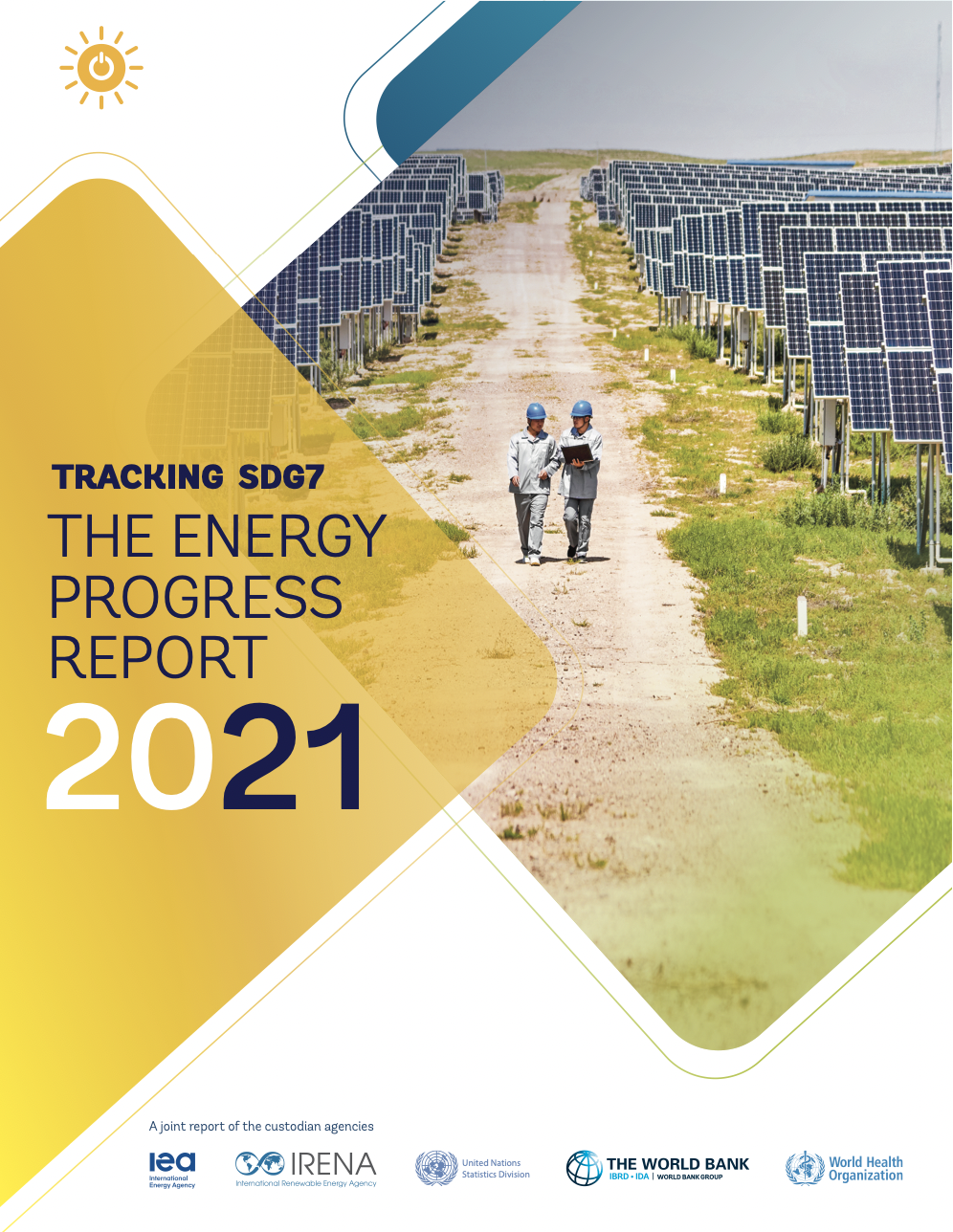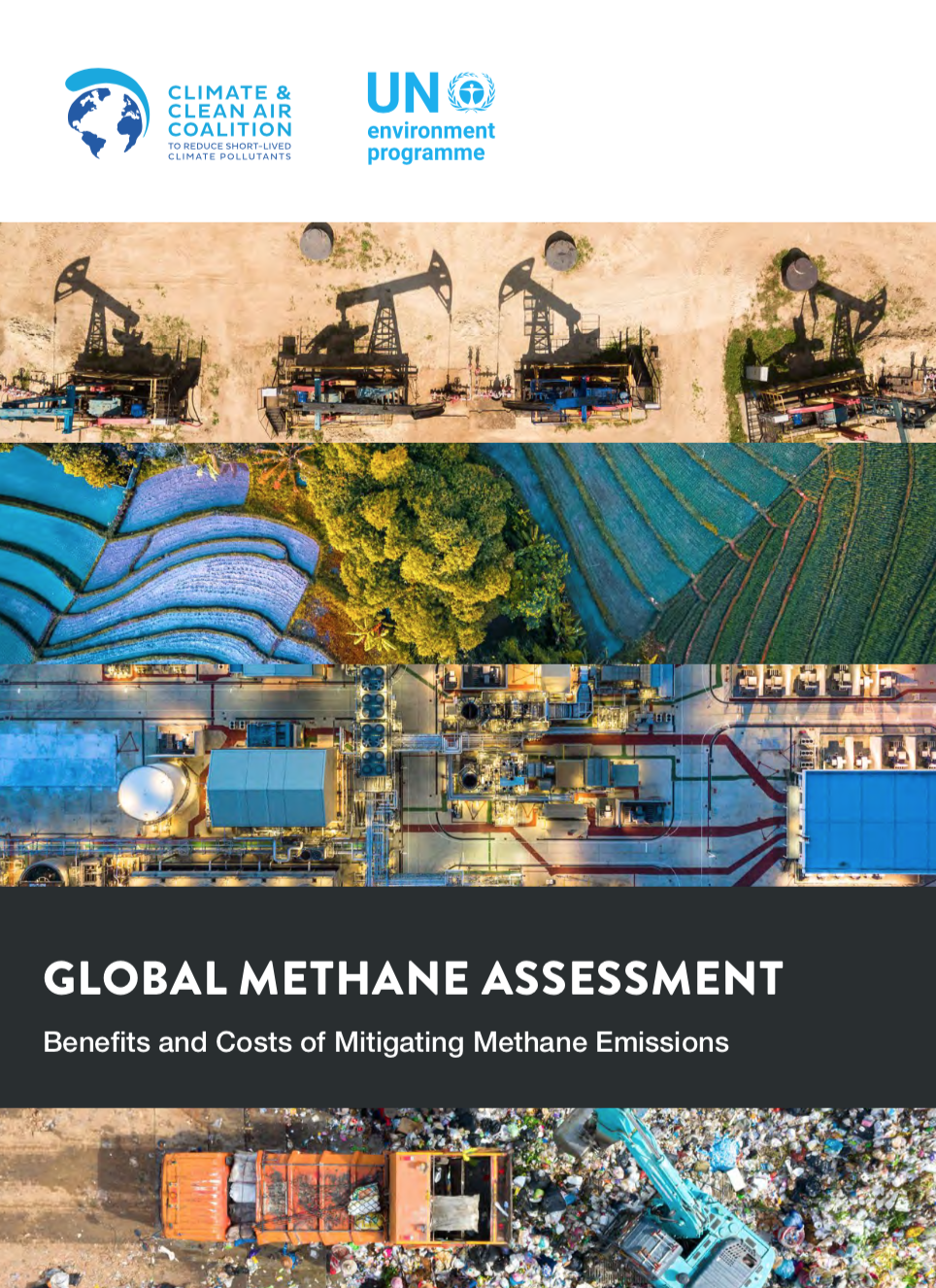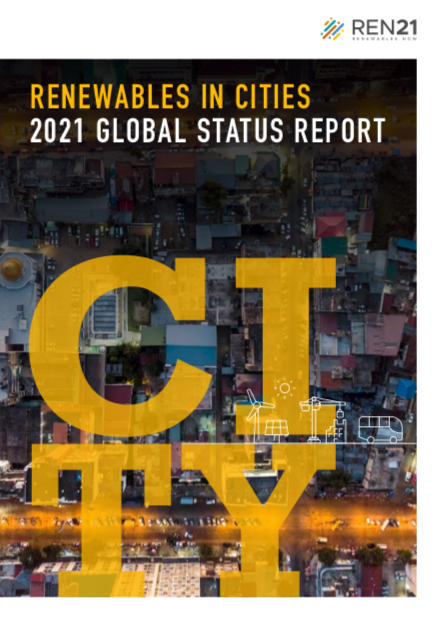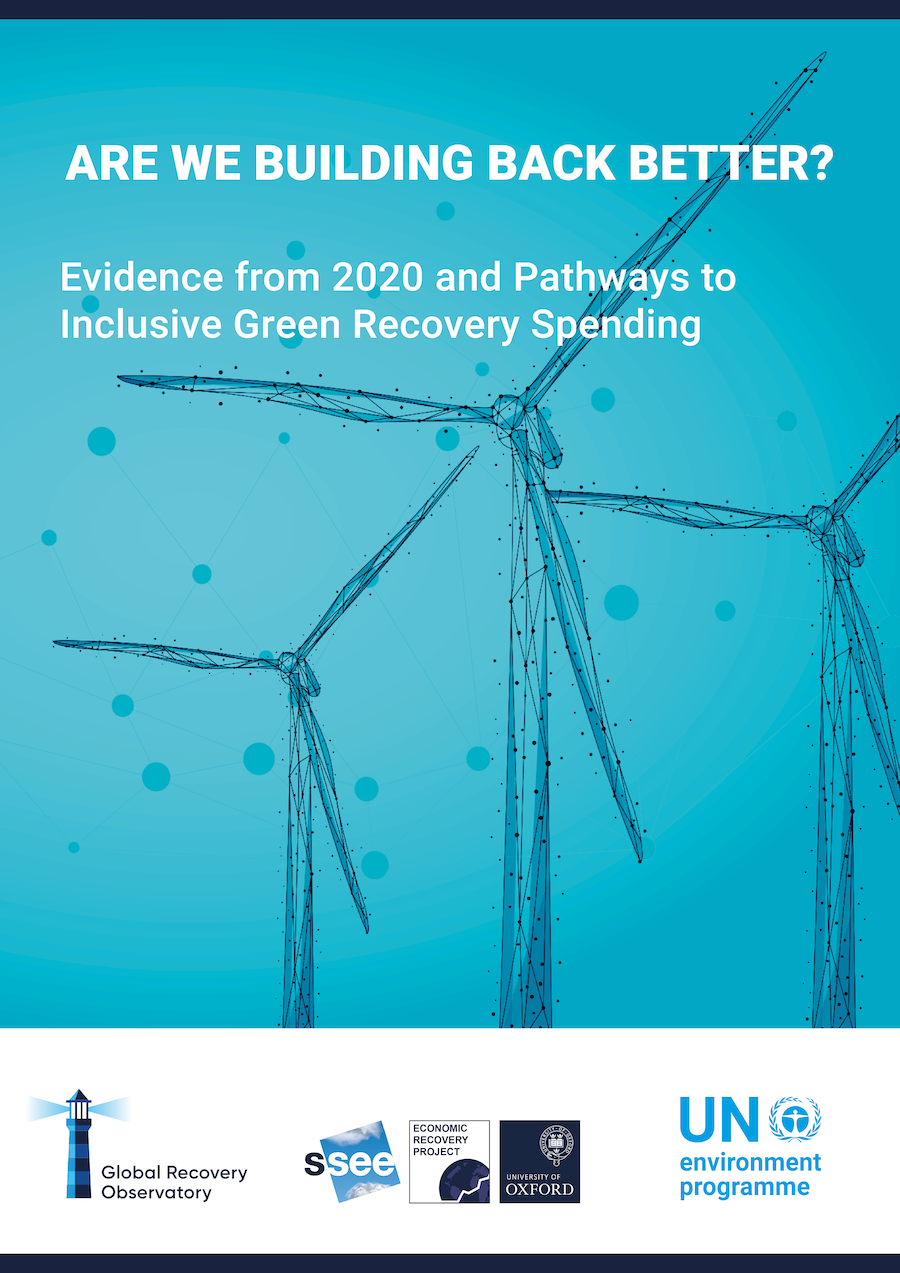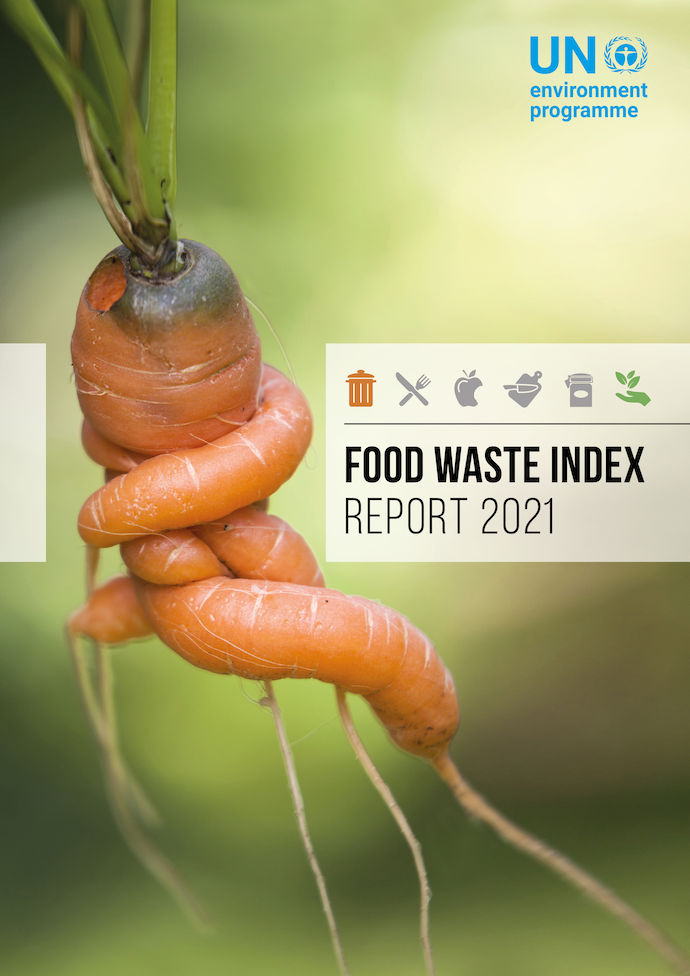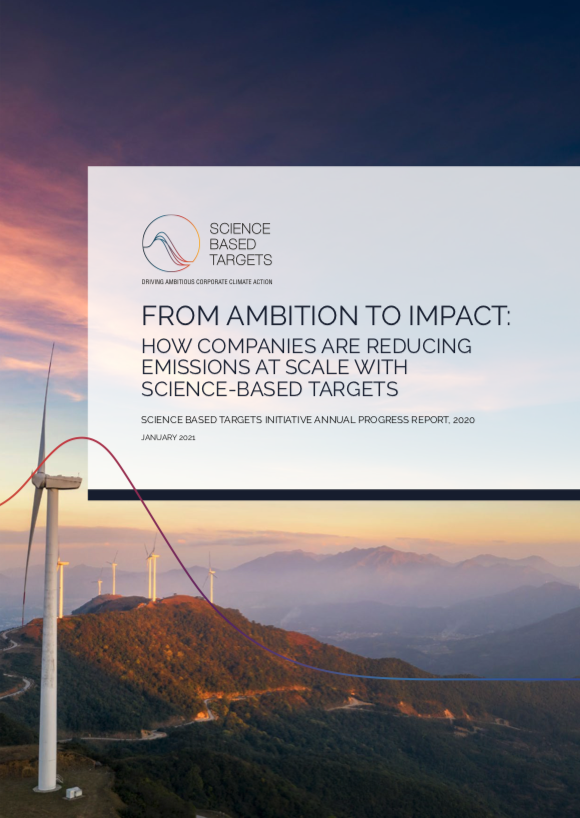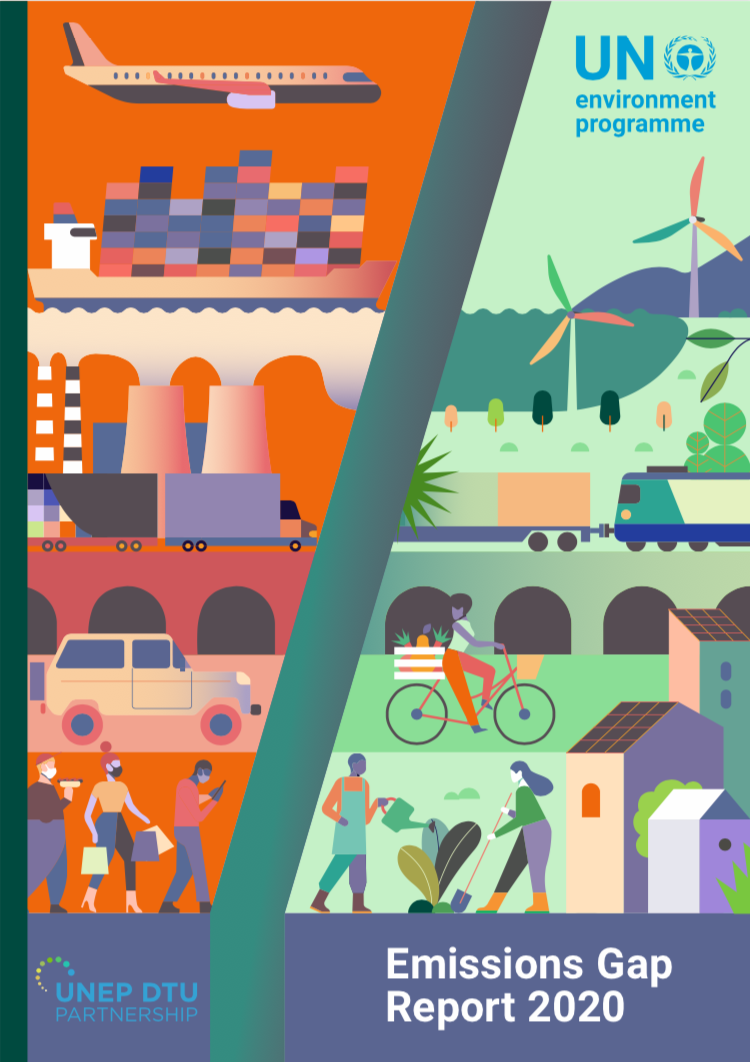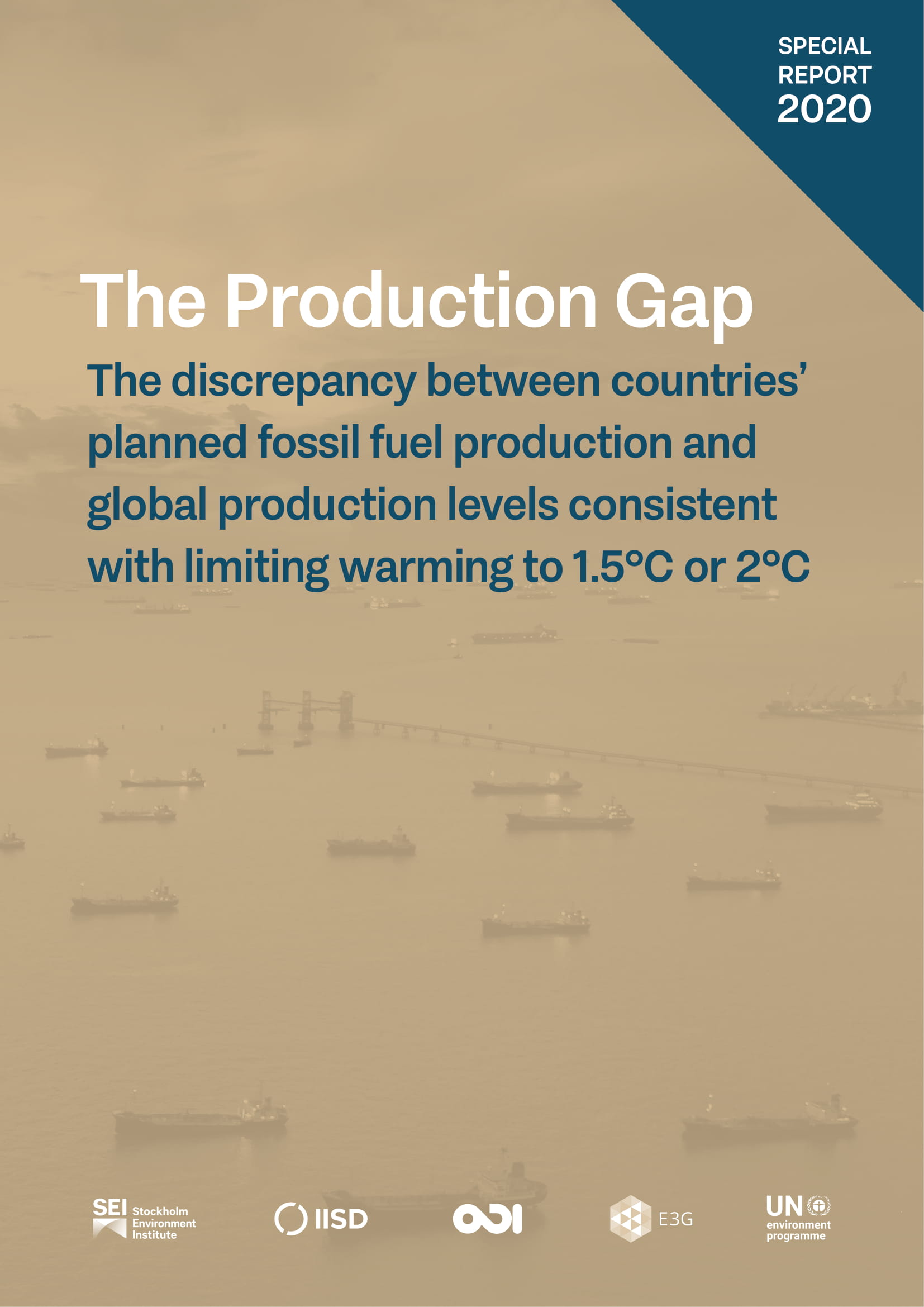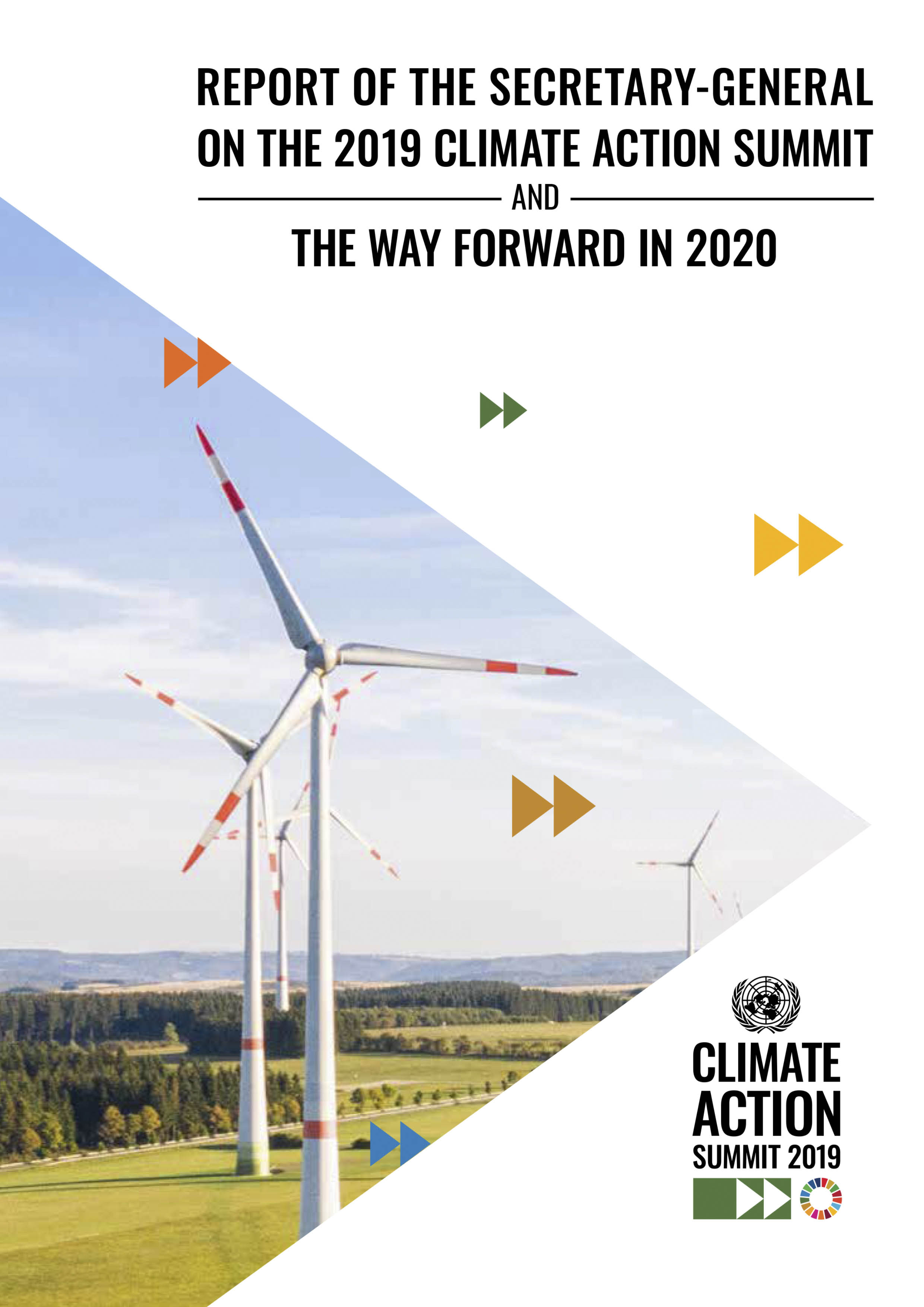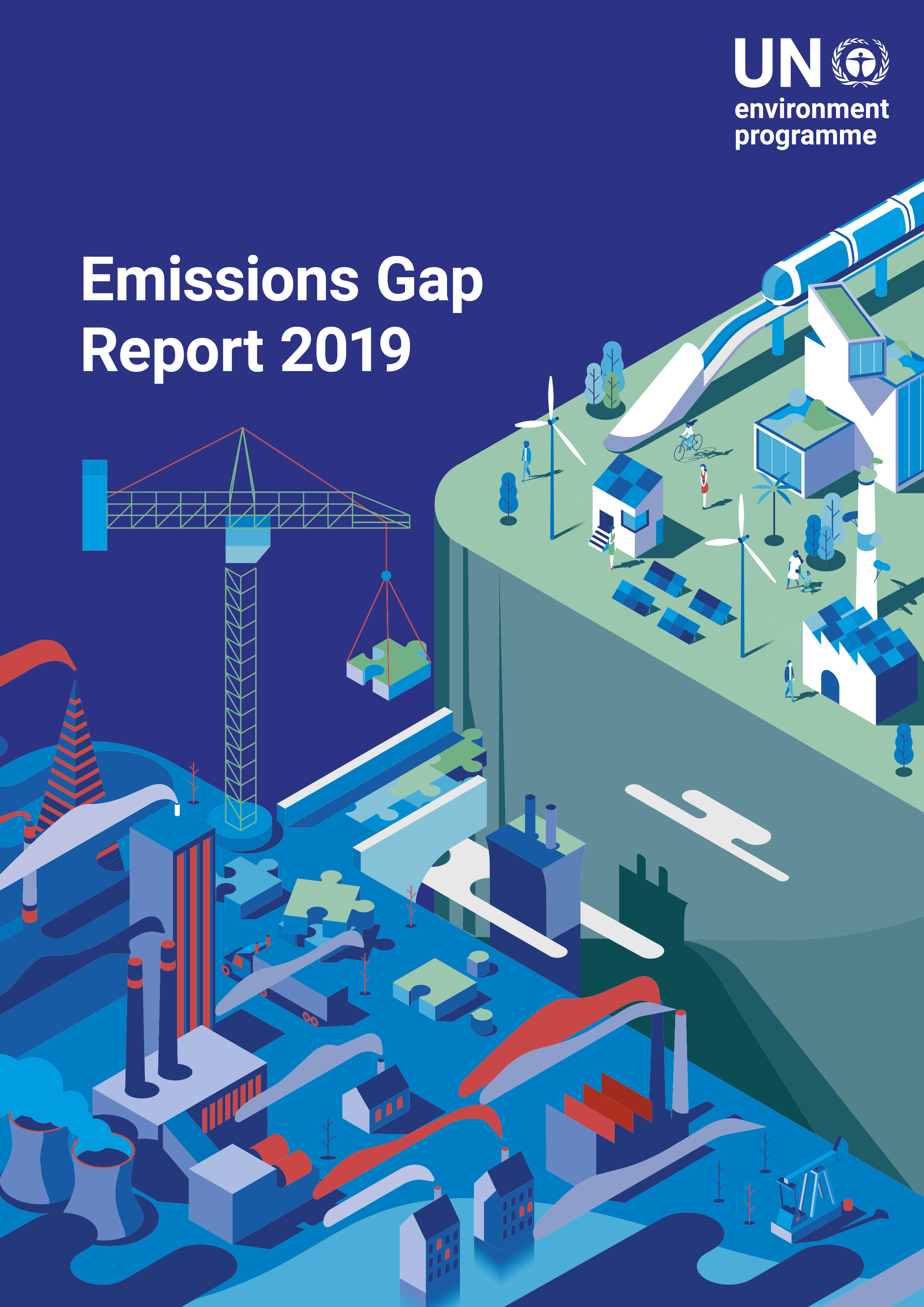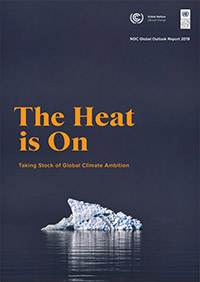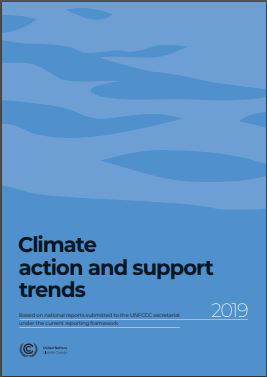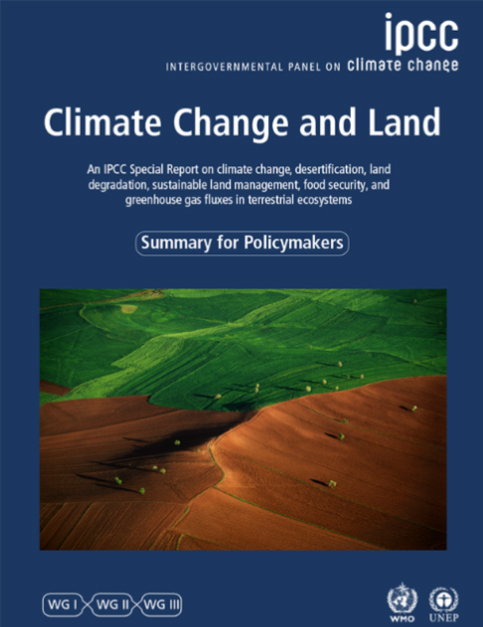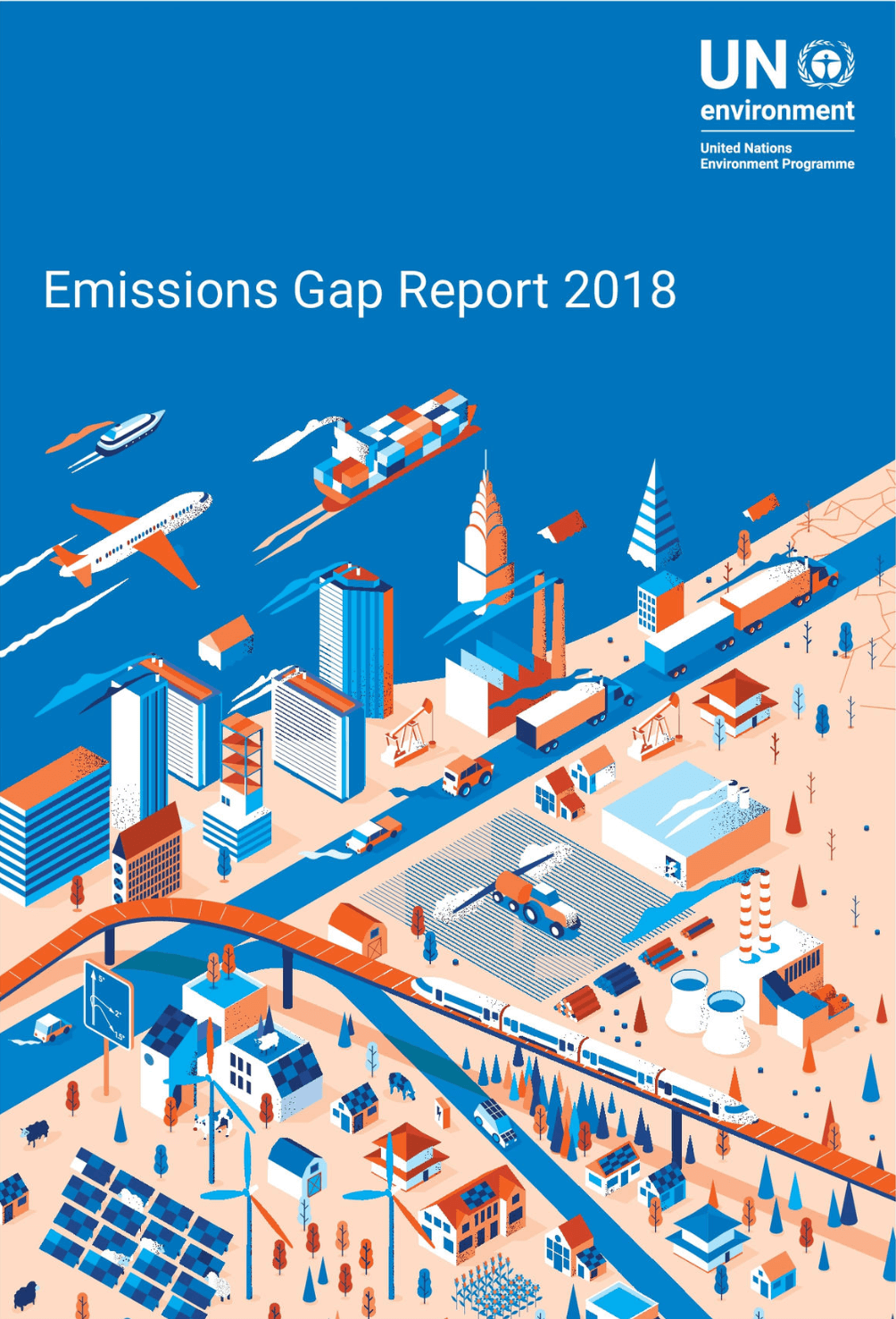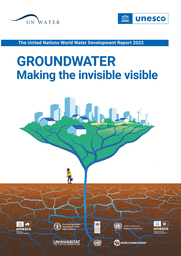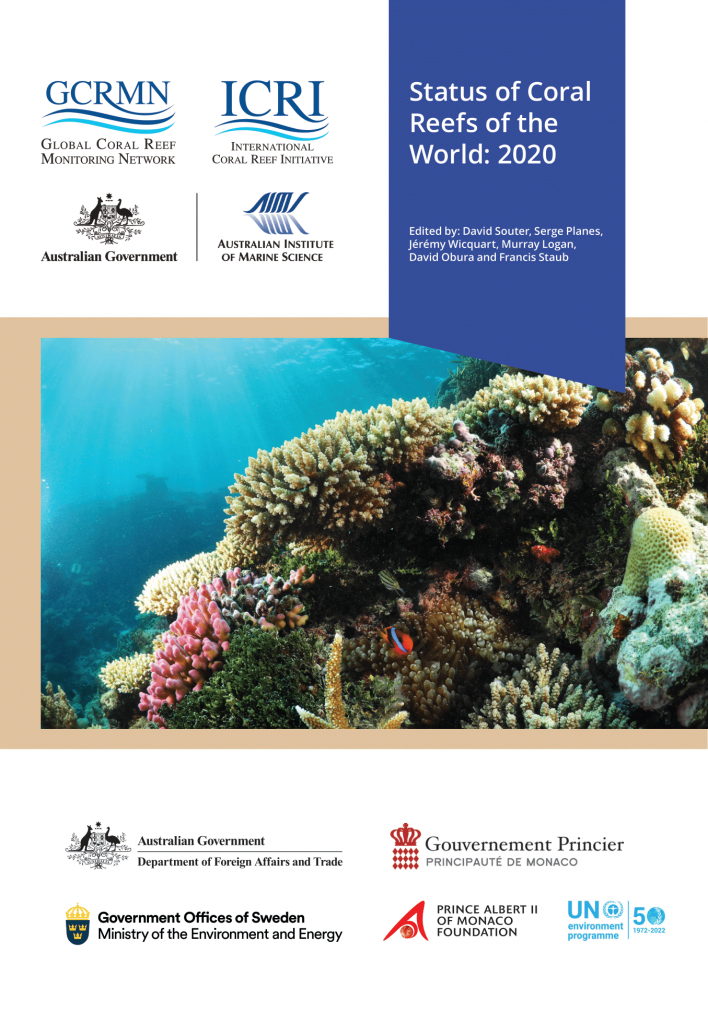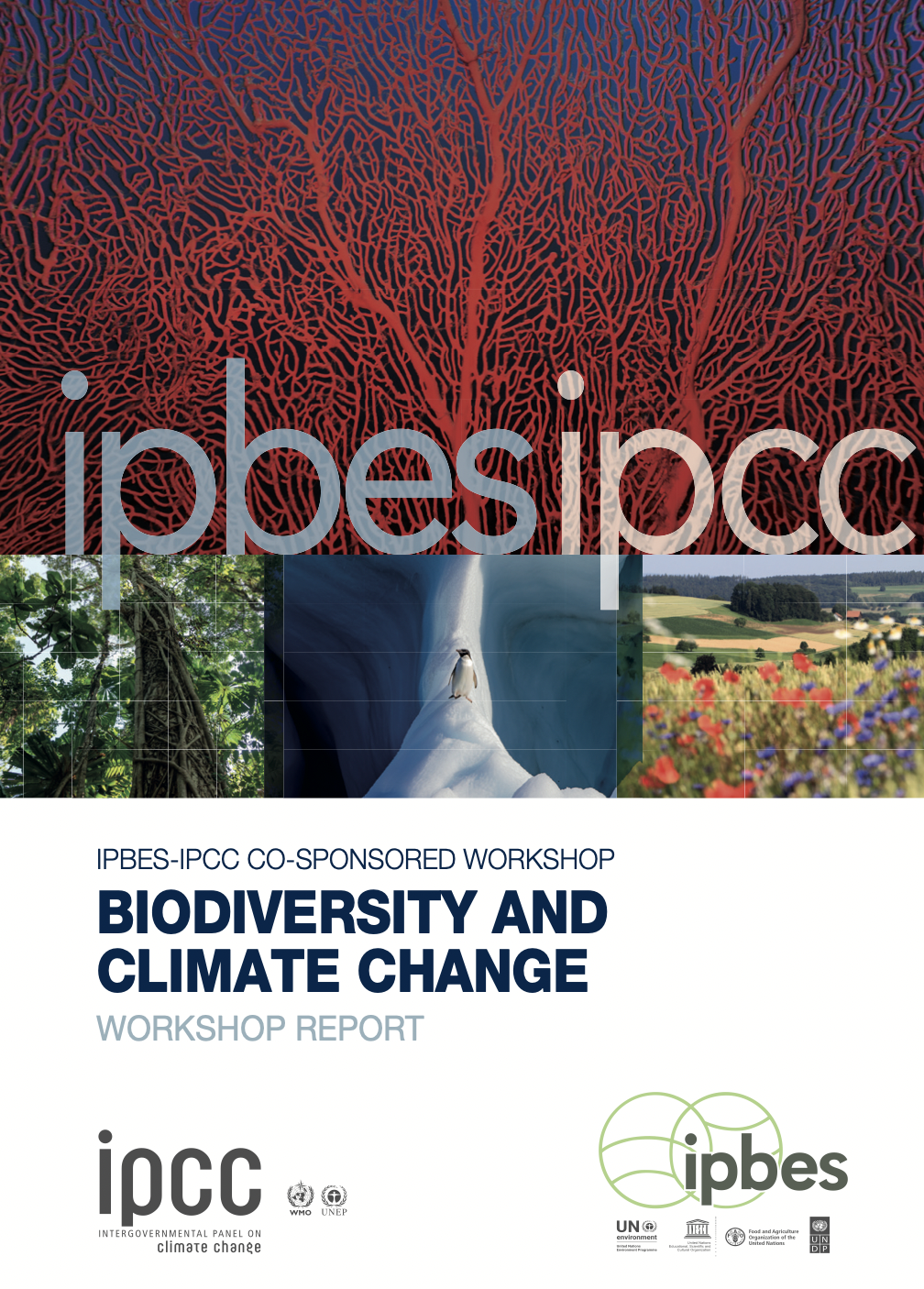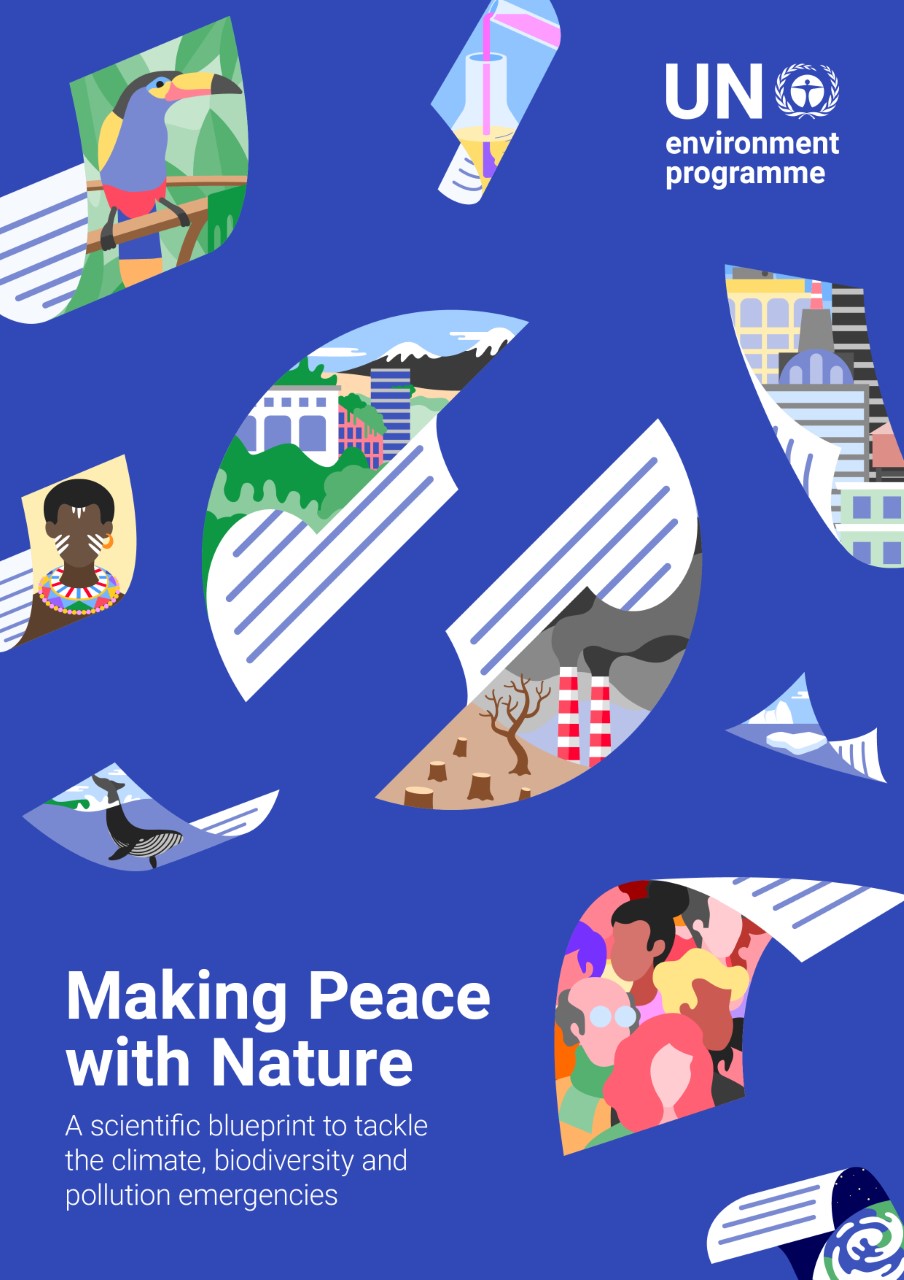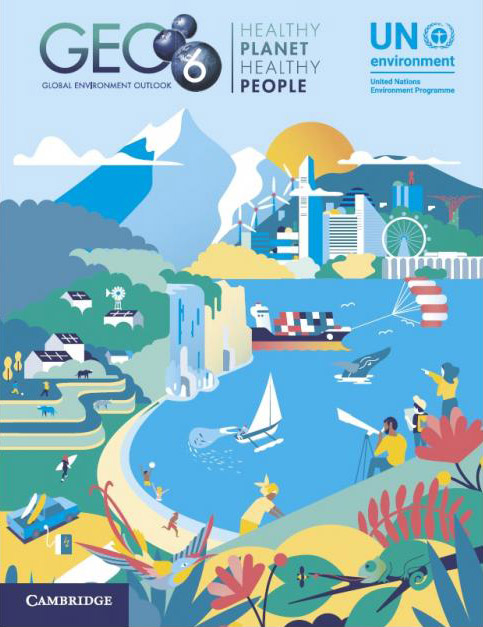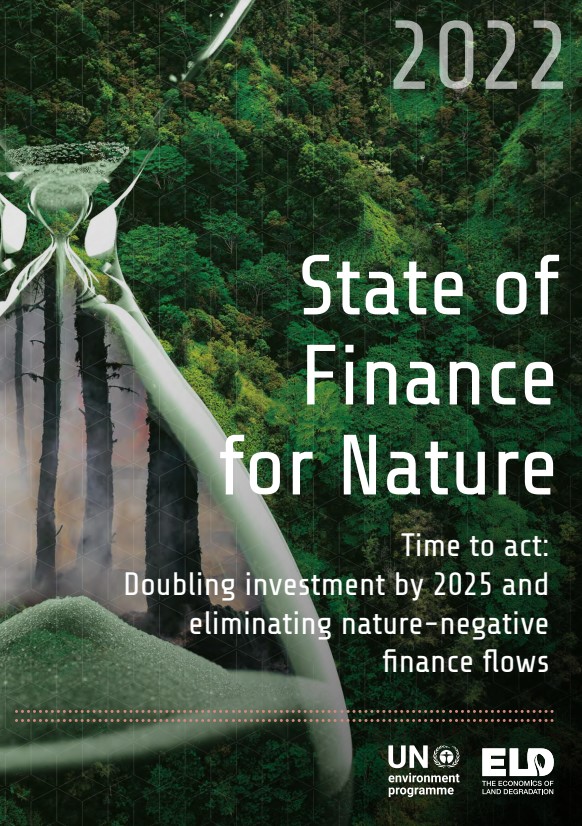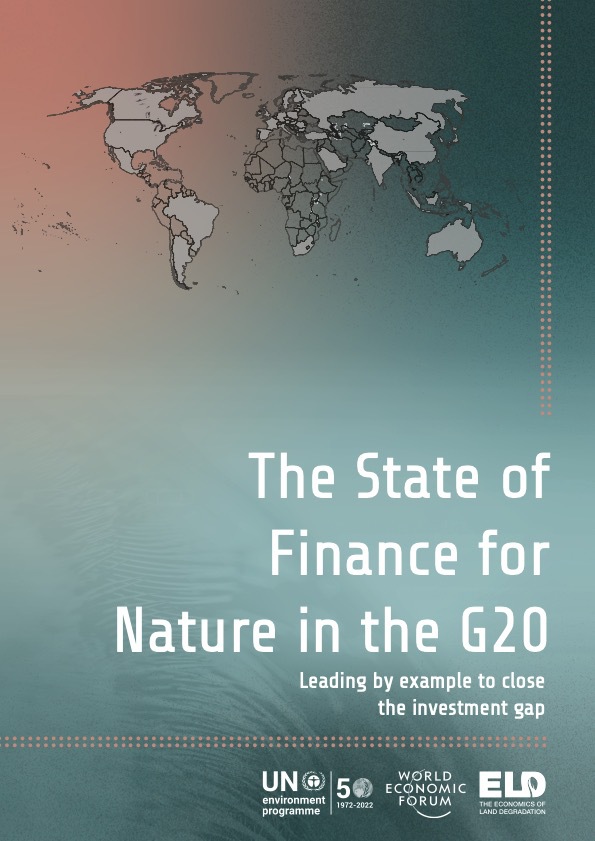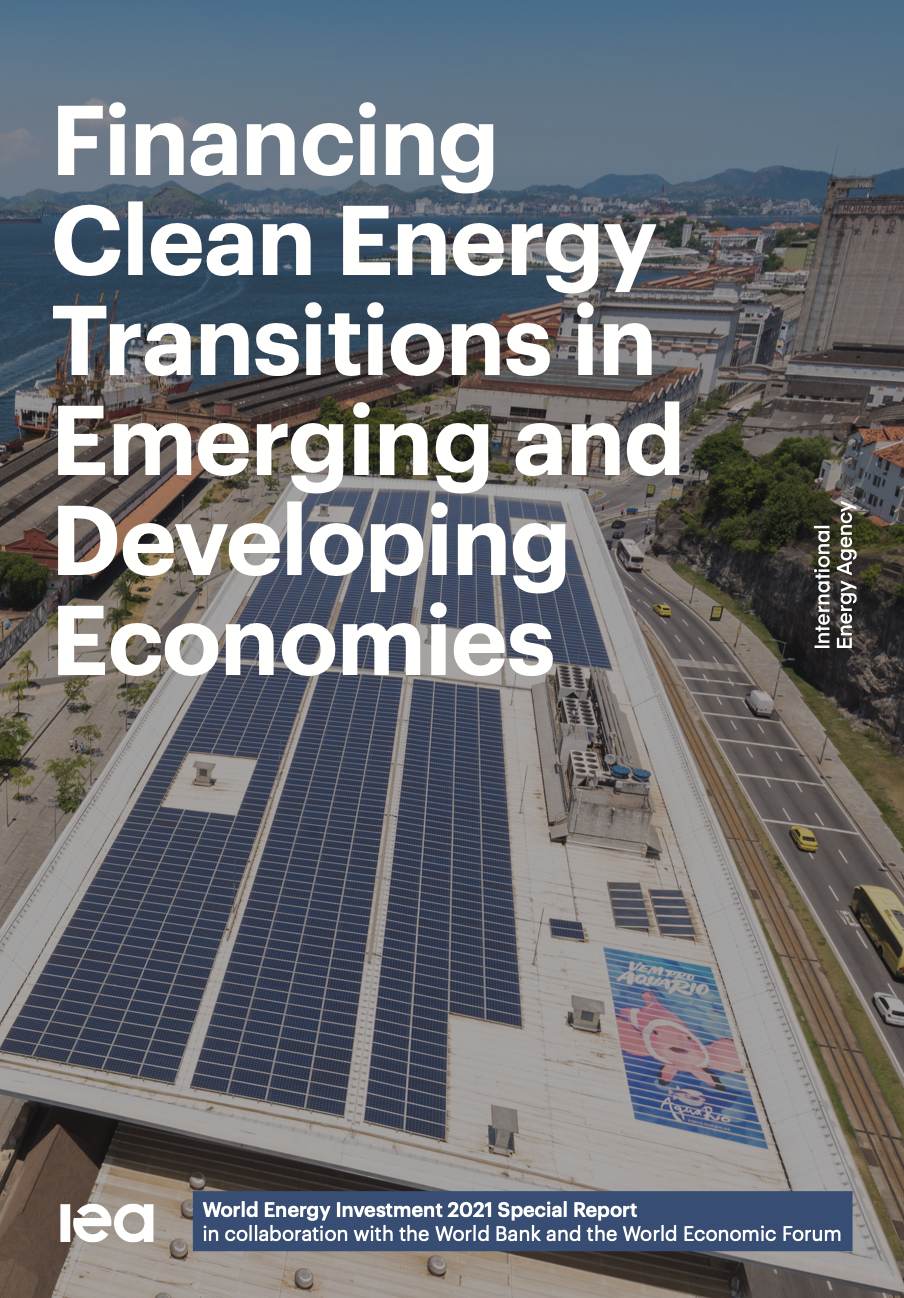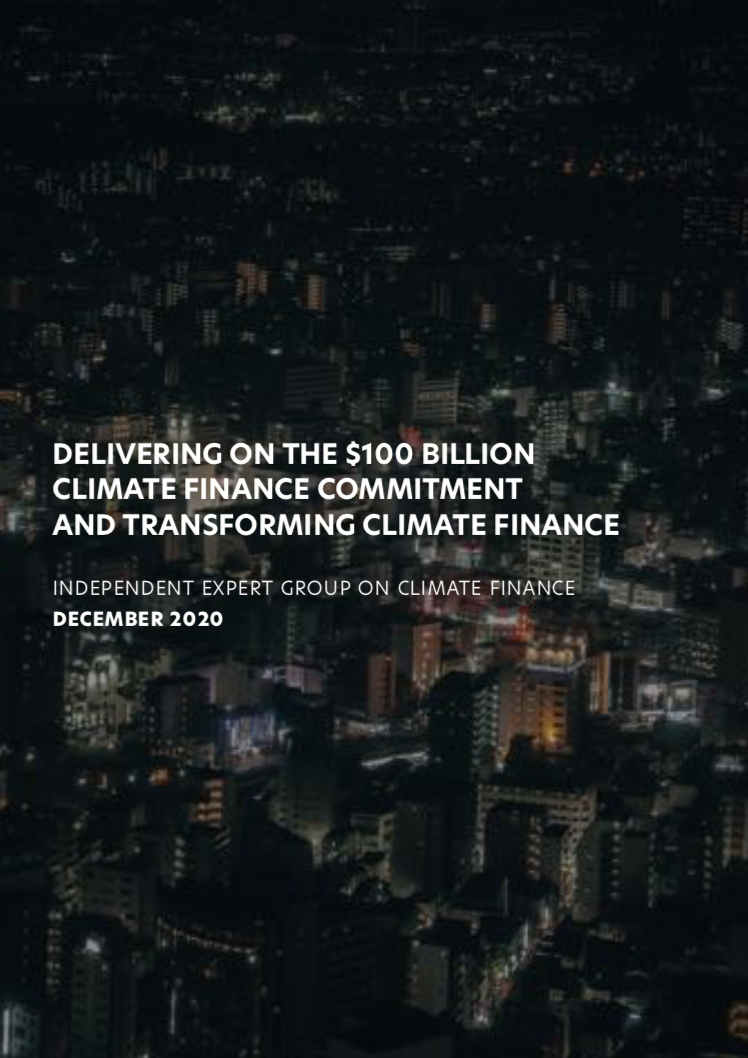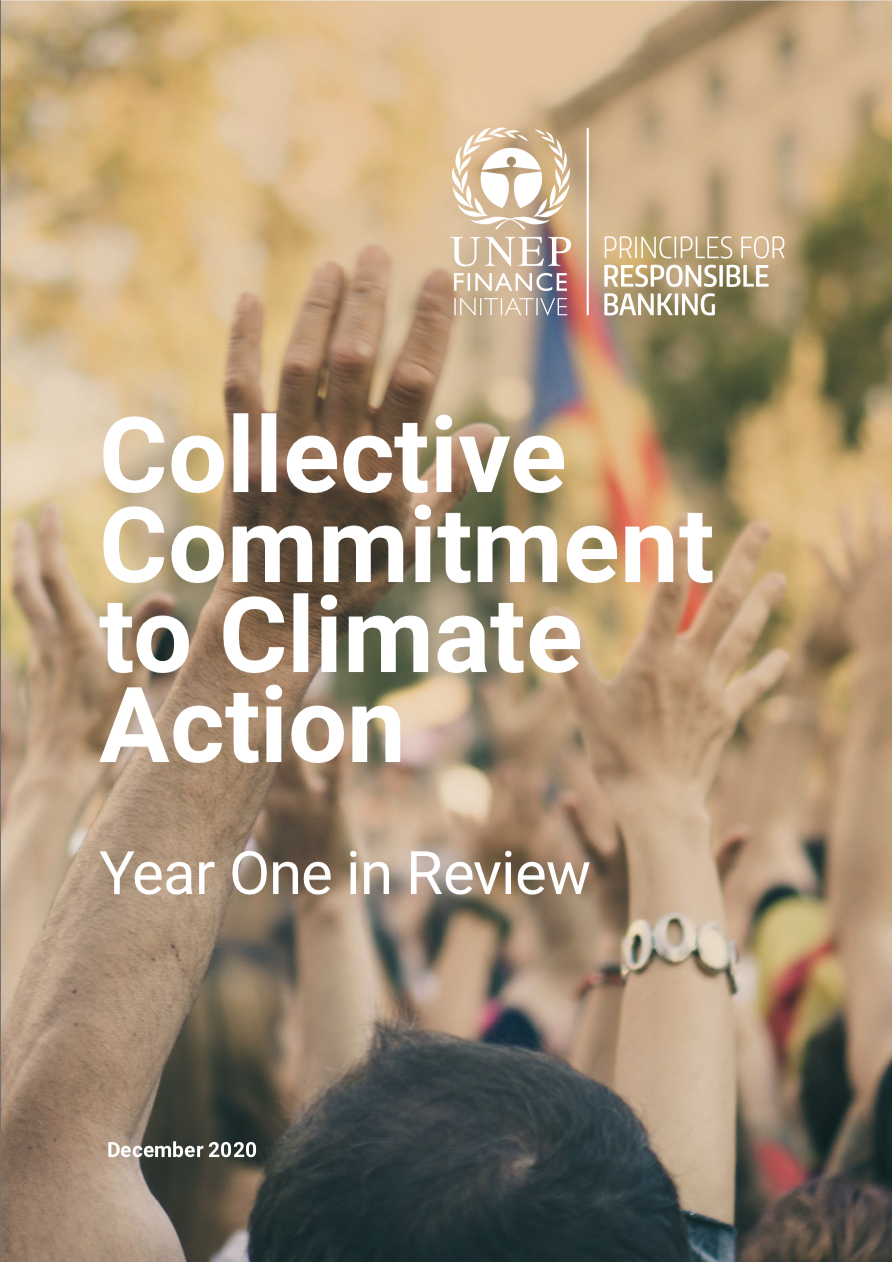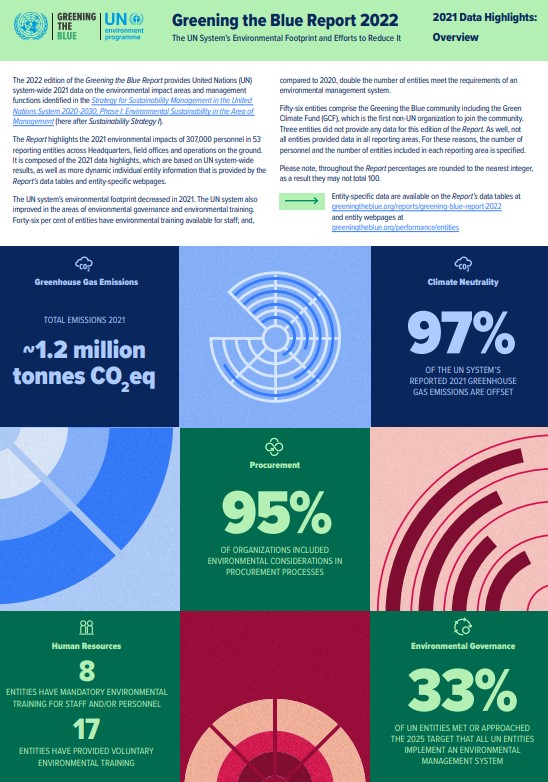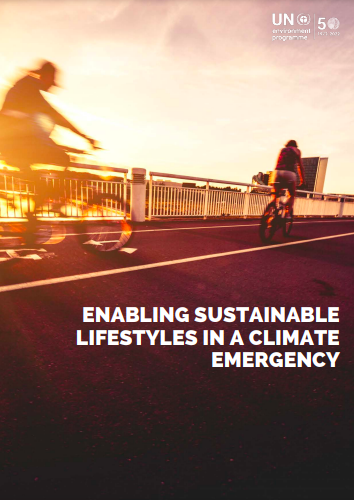Climate Reports
Key reports on climate impacts and solutions from around the United Nations.
What's New
IPCC | Climate Change 2023: Synthesis Report
Feasible, effective options to reduce greenhouse gas emissions and adapt to human-caused climate change exist and need to be put into action now.
WMO | Global Annual to Decadal Climate Update
Global temperatures are likely to surge to record levels in the next five years, fueled by heat-trapping greenhouse gases and a naturally occurring El Niño.
WMO | State of the Global Climate 2022
The past eight years were the eight warmest on record, and climate change continues its advance on land, in the ocean and the atmosphere.
UNEP & WMO | Scientific Assessment of Ozone Depletion
9 January 2023
This report by a UN-backed panel of experts confirms that the ozone layer is successfully recovering, thanks to a phase-out of nearly 99 per cent of banned ozone-depleting substances through the Montreal Protocol. The efforts to protect the ozone layer have also helped address climate change, allowing the world to avoid up to 0.5°C of warming by 2100, thanks to a phase-down of hydrofluorocarbons (HFCs), which are powerful greenhouse gases. In its quadrennial report, the Scientific Assessment Panel to the Montreal Protocol on Ozone Depleting Substances for the first time also examines geoengineering and warns of unintended impacts on the ozone layer of technologies such as the intentional addition of aerosols into the stratosphere, known as stratospheric aerosol injection (SAI). SAI has been proposed as a potential method to reduce climate warming by increasing sunlight reflection.
Executive SummaryUNEP | The State of the World’s Peatlands
17 November 2022
The Global Peatlands Assessment, which is the most comprehensive assessment to-date, shows that the Earth is losing 500,000 hectares of peatlands a year, while already drained and degraded peatlands contribute around 4 per cent of annual global human-induced emissions.
UNEP ReportWMO | State of the Climate in Asia 2021
14 November 2022
The State of the Climate in Asia 2021 report highlights how climate change impacts are wreaking an ever-increasing human, financial and environmental toll, worsening food insecurity and poverty and holding back sustainable development. Economic losses from drought, floods and landslides have rocketed in Asia. In 2021 alone, weather and water-related hazards caused total damage of US$ 35.6 billion, affecting nearly 50 million people.
WMO ReportUNEP | 2022 Global Status Report for Buildings and Construction
2 November 2022
The report provides an annual snapshot of the progress of the buildings and construction sector on a global scale and reviews the status of policies, finance, technologies, and solutions to monitor whether the sector is aligned with the Paris Agreement goals.
UNEP ReportWMO | Executive Action Plan for the Early Warnings for All
7 November 2022
The Executive Action Plan for the Early Warnings for All initiative calls for initial new targeted investments between 2023 and 2027 of US$3.1 billion – a sum which would be dwarfed by the benefits. This is about 6 percent of the requested US$ 50 billion in adaptation financing. It would cover disaster risk knowledge, observations and forecasting, preparedness and response, and communication of early warnings.
WMO Action PlanUNEP | Adaptation Gap Report 2022
3 November 2022
As climate impacts intensify across the globe, countries must dramatically increase funding and implementation of actions designed to help vulnerable nations and communities adapt to the climate storm, according to the latest UN Environment Programme Emissions Gap Report.
UNEP ReportUNFCCC | Nationally Determined Contributions under the Paris Agreement
16 October 2022
A synthesis of nationally determined contributions required under the Paris Agreement underlines that efforts remain insufficient to limit global temperature rise to 1.5 °C by the end of the century. According to the report, the combined climate pledges of 193 Parties under the Paris Agreement could put the world on track for around 2.5 degrees Celsius of warming by the end of the century. Current commitments are projected to increase emissions by 10.6% by 2030, compared to 2010 levels – an improvement over last year’s assessment, which found countries were on a path to increase emissions by 13.7% by 2030 – but far from the 45% decrease needed to limit temperature rise to 1.5 °C.
UN Climate Change ReportUNICEF | The coldest year of the rest of their lives: Protecting children from the escalating impacts of heatwaves
25 October 2022
Latest research from UNICEF shows that 559 million children are currently exposed to high heatwave frequency, where there are on average 4.5 or more heatwaves per year. Further, 624 million children are exposed to one of three other high heat measures - high heatwave duration, high heatwave severity or extreme high temperatures. It warns that even at lower levels of global heating, in just three decades, more regular heatwaves are unavoidable for children everywhere.
UNICEF ReportOCHA/IFRC | Extreme heat: Preparing for the heatwaves of the future
10 October 2022
Heatwaves already kill thousands of people every year, and they will become deadlier with every further increment of climate change. They demand a humanitarian response that is locally grounded, that acts quickly with data and analysis, and that works in partnerships with local governments, civil society, and development actors to protect the most vulnerable people.
OCHA/IFRC ReportWMO | 2022 State of Climate Services: Energy
11 October 2022
The supply of electricity from clean energy sources must double within the next eight years to limit global temperature increase. Otherwise, there is a risk that climate change, more extreme weather and water stress will undermine our energy security and even jeopardize renewable energy supplies, according to a new multi-agency report from the World Meteorological Organization.
WMO ReportUNDRR | Global status of multi-hazard early warning systems
13 October 2022
A report from the United Nations Office for Disaster Risk Reduction and the World Meteorological Organization warns that half of the countries globally are not protected by multi-hazard early warning systems.
UNDRR ReportUNU-EHS | Interconnected Disaster Risks
18 October 2022
In recent years, the world has witnessed catastrophic disasters, from record-breaking heat waves to floods, extreme droughts, wildfires and earthquakes. The latest edition of the Interconnected Disaster Risks report analyzes ten disasters around the world, looking at how they are correlated, share the same root causes compounded by the same issues and should no longer be viewed in isolation.
UNU-EHS ReportILO and IRENA | Renewable Energy and Jobs: Annual Review 2022
22 September 2022
The new report by the International Renewable Energy Agency in collaboration with the International Labour Organization provides the latest estimates of renewable energy employment globally.
ILO and IRENA ReportREN21 | Renewables 2022 Global Status Report
15 June 2022
We are facing the biggest global energy crisis in history with rising energy consumption and a hike in fossil fuel use which is outpacing growth in renewables in 2021, warns a new report from REN21.
REN21 ReportWHO | Climate action must include mental health
3 June 2022
Climate change exacerbates social, environmental, and economic risk factors, directly impacting the mental health and psychosocial wellbeing of many communities, warns a new policy brief from the World Health Organization which recommends key approaches to address the growing impact.
WHO ReportUNCCD | Global Land Outlook
27 April 2022
The way land resources – soil, water, and biodiversity – are currently mismanaged and misused threatens the health and continued survival of many species on Earth, including our own, warns a stark new report from the UN Convention to Combat Desertification.
UNCCD ReportUNDRR | Our World at Risk
26 April 2022
COVID-19 and climate change are rapidly making it clear that, in today’s crowded and interconnected world, disaster impacts increasingly cascade across geographies and sectors. Despite progress, risk creation is outstripping risk reduction, warns the UN Office for Disaster Risk Reduction’s latest report.
UNDRR ReportWMO | State of the Climate in Latin America and the Caribbean 2020
16 August 2021
This is the first report of its kind for Latin America and the Caribbean and it shows that the region is facing increasing temperatures, glaciers retreat, sea-level rise, ocean acidification, coral reefs bleaching, land and marine heatwaves, intense tropical cyclones, floods, droughts, and wildfires. The impacts to most vulnerable communities, including the Small Islands Develop States, have been substantial and exacerbated by the COVID-19 outbreak. The report emphasizes the need to enhance climate resilience through identified pathways, such as ecosystem-based responses, as well as strengthened climate services and multi-hazard early warning systems.
WMO ReportWMO | State of the Climate in South-West Pacific 2020
10 November 2021
This report provides informed climate analysis and climate change trends for states and territories across the vast South-West Pacific Ocean, the adjacent oceanic areas north of the equator and the eastern parts of the Indian Ocean. The first report of its kind, it highlights the real and potential risks associated with the changes occurring in ocean circulation, temperature, acidification and deoxygenation, as well as rising sea-level. Climate and extreme weather events had major and diverse impacts on population movements and on the vulnerability of people already on the move in the region throughout 2020. Moreover, the COVID-19 pandemic has disrupted socio-economic development in the region, affecting key drivers of growth and revealing gaps in countries’ capacities for addressing systemic and cascading risk. Addressing the rising climate risks and associated impacts requires local, regional and transnational capacity building, development of climate services and integrated disaster risk reduction approaches.
WMO ReportUNEP| The Adaptation Gap Report 2021: The Gathering Storm
1 November 2021
A new report calls for urgent efforts to increase the financing and implementation of actions to adapt to the growing impacts of climate change. While policies and planning are increasing for climate change adaptation, financing and implementation are still far behind. Moreover, countries have largely missed the opportunity to use the pandemic recovery to prioritize green economic growth and adapt to climate impacts such as droughts, storms and wildfire. The report finds that the costs of adaptation are likely in the higher end of an estimated $140-300 billion per year by 2030 and $280-500 billion per year by 2050 for developing countries only. Estimated adaptation costs in developing countries are five to 10 times greater than current public adaptation finance flows, and the gap is widening.
UNEP ReportUNDP| Showing Promise: The State of Climate Ambition
21 October 2021
The Paris Agreement’s “ratchet mechanism”, where countries regularly recalibrate and increase the ambition of climate goals, is working according to this report. But small island developing States and least developed countries are leading the way on greater ambition despite contributing only a marginal share of global emissions. The report stresses that it is time for the G20 countries to step up given that they emit the most. In reviewing the most recent national climate action plans, known as nationally determined contributions, the report finds that they are higher quality, more inclusive and country driven than in an earlier round. But finance remains a key hurdle. While countries are increasingly engaging the private sector as critical to scaled up climate action, they are not adequately defining needs in just transition processes. Issues related to gender equality and youth feature more prominently yet more needs to be done to capitalize on the potential of these groups as climate actors and leaders.
UNDP ReportWMO and others | The State of the Climate in Asia 2020
26 October 2021
Extreme weather and climate change impacts across Asia in 2020 caused the loss of life of thousands of people, displaced millions of others and cost hundreds of billions of dollars, while wreaking a heavy toll on infrastructure and ecosystems. Sustainable development is threatened, with food and water insecurity, health risks and environmental degradation on the rise. A new report provides an overview of land and ocean temperatures, precipitation, glacier retreat, shrinking sea ice, sea level rise and severe weather. It examines socioeconomic impacts in a year when the region was also struggling with the COVID-19 pandemic, which in turn complicated disaster management. The report shows how every part of Asia was affected, from Himalayan peaks to low-lying coastal areas, from densely populated cities to deserts and from the Arctic to the Arabian seas.
WMO ReportUNEP | Emissions Gap Report 2021: The Heat Is On
26 October 2021
New and updated climate commitments fall far short of Paris Agreement goals, leaving the world on track for a global temperature rise of at least 2.7°C this century. The latest Emissions Gap Report finds that updated national commitments for reducing emissions by 2030 only shave an additional 7.5 per cent off predicted annual totals. Reductions of 55 per cent are needed to stay on course in keeping global temperature rise to 1.5°C. Net-zero pledges could make a big difference if fully implemented, restraining predicted global temperature rise to 2.2°C. This provides hope that further action could still head off the most catastrophic impacts of climate change. But net-zero pledges are vague and incomplete in many cases. To stay at no more than 1.5°C, the world has eight years to take an additional 28 gigatonnes of carbon dioxide equivalent off annual emissions, above what has already been promised. Current annual emissions are close to 60 gigatonnes of carbon dioxide equivalent.
UNEP ReportUNFCCC | Nationally Determined Contributions Under the Paris Agreement: Revised Note by the Secretariat
25 October 2021
An updated synthesis of climate action plans communicated in Nationally Determined Contributions confirms overall trends identified in a full report released in September 2021. The update provides the last information to inform global climate talks at COP26. It synthesizes information from the 165 latest available NDCs, representing all 192 Parties to the Paris Agreement, including the 116 new or updated NDCs communicated by 143 Parties on 12 October 2021. For these 143 Parties, total emissions are estimated to be about 9 per cent below the 2010 level by 2030. Some 71 Parties communicated a carbon neutrality goal around mid-century, with their emissions levels up to 88 per cent lower in 2050 than in 2019. For all available NDCs of all 192 Parties, however, a sizable increase of about 16 per cent in global emissions is expected by 2030 compared to 2010. This may lead to a temperature rise of about 2.7°C by the end of the century.
UNFCCC ReportUNEP and others | 2021 Production Gap Report
20 October 2021
The 2021 Production Gap Report finds that despite increased climate ambitions and net-zero commitments, governments plan to produce more than double the amount of fossil fuels in 2030 than what would be consistent with limiting global warming to 1.5°C. Over the next two decades, governments are collectively projecting an increase in global oil and gas production, and only a modest decrease in coal production. Taken together, plans and projections see global, total fossil fuel production rising to at least 2040. The report provides country profiles for 15 major producer countries, where most governments continue to provide significant policy support for fossil fuel production. They include Australia, Brazil, Canada, China, Germany, India, Indonesia, Mexico, Norway, Russia, Saudi Arabia, South Africa, the United Arab Emirates, the United Kingdom and the United States. Recent scientific evidence clearly confirms that unless global coal, oil, and gas production start declining immediately and steeply, warming will exceed 1.5°C and result in catastrophic consequences
UNEP ReportWHO | Special Report on Climate Change and Health
11 October 2021
The Special Report on Climate Change and Health spells out the global health community’s prescription for climate action based on growing research that establishes inseparable links between climate and health. The report was launched with an open letter signed by over two thirds of the global health workforce – 300 organizations representing at least 45 million doctors and health professionals worldwide. They call on national leaders and climate talks to step up climate action. Unprecedented extreme weather events and other climate impacts are taking a rising toll on people’s lives and health. Increasingly frequent heatwaves, storms and floods kill thousands and disrupt millions of lives, while threatening health-care systems and facilities when they are needed most. Changes in weather and climate also undercut food security and drive up food-, water- and vector-borne diseases, such as malaria. Climate impacts are also negatively affecting mental health.
WHO ReportWMO | 2021 State of Climate Services: Water
5 October 2021
A new report urges the world to wake up to the looming water crisis. Water-related hazards like floods and droughts are increasing because of climate change. The number of people suffering water stress is expected to soar, exacerbated by population increases and dwindling availability. But management, monitoring, forecasting and early warnings are fragmented and inadequate, while global climate finance efforts are insufficient. The State of Climate Services 2021: Water highlights the need for urgent action to improve cooperative water management, embrace integrated water and climate policies, and scale up investment in this precious commodity. It underpins all international goals on sustainable development, climate change adaptation and disaster risk reduction.
WMO ReportWMO | Climate Indicators and Sustainable Development: Demonstrating the Interconnections
22 September 2021
Achieving the Sustainable Development Goals by 2030 largely depends on addressing human-induced climate change. A new report demonstrates connections between global climate and the goals. It champions the need for greater international collaboration to both achieve the SDGs and limit global warming to no more than 1.5 degrees Celsius. A story map highlights seven climate indicators with impacts across the global goals: carbon dioxide concentration, temperature, ocean acidification, ocean heat content, sea-ice extent, glacier mass balance and sea-level rise. The report examines the implications of the latest data and scientific research on the state of the global climate for sustainable development, highlighting how the climate is already changing in ways that may impede progress on the SDGs.
WMO ReportUNFCCC | Nationally determined contributions under the Paris Agreement
17 September 2021
A synthesis of nationally determined contributions required under the Paris Agreement indicates that while there is a clear trend in reducing greenhouse gas emissions over time, nations must urgently redouble climate efforts to prevent global temperature from crossing a dangerous threshold of 1.5 degrees Celsius. The report includes information from all 191 Parties to the Paris Agreement based on their latest NDCs, including 86 updated or new NDCs submitted by 113 Parties. The new or updated NDCs cover about 49 per cent of global emissions. For the 113 Parties, greenhouse gas emissions are projected to decrease by 12% in 2030 compared to 2010. This is an important step towards the 45 per cent reduction in 2030 required to keep to the 1.5 degree goal. NDCs of all 191 Parties, however, imply a sizable 16 per cent increase in global emissions in 2030. Without immediate action, this could lead to a temperature rise of about 2.7 degrees Celsius by the end of the century.
UNFCCC ReportWMO | Atlas of Mortality and Economic Losses from Weather, Climate and Water Extremes (1970 - 2019)
31 August 2021
A comprehensive new report finds that a disaster related to a weather, climate or water hazard occurred every day on average over the past 50 years, killing 115 people and causing $202 million in losses each day. The number of disasters increased by five times; economic losses rose sevenfold. But improved early warnings and disaster management reduced deaths by almost threefold. Cumulatively, more than 11,000 disasters were reported, with just over 2 million deaths and $3.64 trillion in losses. Weather, climate and water hazards accounted for 50 per cent of these disasters and nearly half of deaths, 91 per cent of which occurred in developing countries. Of the top 10 disasters, the largest human losses came from droughts, storms, floods and extreme temperature. Storms and floods generated the greatest economic costs. Three storms in 2017 alone accounted for a third of total economic losses from the top 10 disasters over the 50-year period.
WMO ReportUNICEF | The Climate Crisis Is a Child Rights Crisis
20 August 2021
At least 1 billion children live in 33 countries that are at extremely high risk from multiple climate and environmental shocks, according to the new Children’s Climate Risk Index. It offers the first comprehensive analysis of climate risk from a child’s perspective. The index ranks countries based on children’s exposure to shocks such as cyclones and heatwaves. It also considers children's vulnerability from gaps in essential services such as for education and health care. While nearly every child in the world is at risk from at least one climate or environmental hazard, the worst affected countries face multiple and often overlapping shocks that threaten to erode development progress and deepen child deprivation.
UNICEF ReportWMO | Hydromet Gap Report 2021
8 July 2021
Each year, the world could save an estimated 23,000 lives and gain $162 billion in benefits from improving weather forecasts, early warning systems and climate information, known as hydromet. That’s the conclusion of the first Hydromet Gap Report. It shows how far the world has to go to tap the benefits of effective weather and climate services, but also highlights how investments in multi-hazard early warning systems create benefits worth at least 10 times their costs. These are vital to build resilience to extreme weather, yet only 40 percent of countries currently have effective warning systems in place. Large gaps remain in vital data upon which these services depend, particularly in the least developed countries and small island developing States.
ReportIRENA | World Energy Transitions Outlook
30 June 2021
Accelerating energy transitions in line with a livable climate could double the number of energy jobs, up to 122 million by 2050, according to a new report. It also finds a substantial boost to the global economy of 2.4 per cent over the expected growth of current plans within the next decade. The report predicts that renewables-based energy systems will instigate profound changes that will reverberate across economies and societies. Sharp adjustments in capital flows and a reorientation of investments are necessary to align energy with a positive economic and environmental trajectory. Forward-looking policies can accelerate transition, mitigate uncertainties, and ensure maximum benefits of energy transition. The annual investment of USD 4.4 trillion needed on average is high but feasible.
ReportUnited Nations | Special Report on Drought 2021
17 June 2021
Drought affects millions of people, especially the most vulnerable. The impacts reach across societies, ecosystems and economies. With climate change increasing temperatures and disrupting rainfall, drought frequency, severity and duration are on the rise many regions. This requires urgent action to better manage risks and reduce devastating tolls on human lives and livelihoods. The Special Report on Drought 2021 empha¬sizes solutions in managing drought risks and calls for a sharper focus on prevention by addressing root drivers of drought and socioecological vulnerability. It stresses that risk prevention and mitigation have a far lower cost than reaction and response, and offers recommendations on how to achieve drought resilience.
ReportREN21 | Renewables 2021 Global Status Report
15 June 2021
2020 could have been a gamechanger. With economies worldwide ravaged by COVID-19, primary energy demand fell by 4 per cent. Yet G20 countries, the planet’s biggest polluters, barely met or even missed their unambitious renewable energy targets. The Renewables 2021 Global Status Report shows that the world is nowhere near the necessary paradigm shift towards a clean, healthier and more equitable energy future, even as the benefits of renewables are indisputable. In many regions, it is now cheaper to build new wind or solar PV plants than to operate existing coal-fired power plants. The report suggests accelerating the uptake of renewable energy by making it a key performance indicator for every economic activity, budget and public purchase, and adopting clear targets and plans to shift to renewable energy and end fossil fuel use.
ReportCDB and the UN Global Compact | Taking the Temperature
10 June 2021
New research finds that the G7 stock indexes are not currently on a 2°C pathway, much less the 1.5°C one that is so urgently needed. Fossil fuels are a key contributor to the emissions of all seven. Taking the Temperature: Assessing and scaling-up climate ambition in the G7 business sector also finds that indexes with a higher share of emissions covered by science-based targets for reductions result in lower overall temperature ratings. Companies with such targets are already cutting emissions at scale, and despite the findings, momentum for climate action in G7 countries is growing. Overall, 2020 was a milestone year for climate commitments, with the annual rate of adoption of science-based targets doubling compared to 2015-2019. The report maps four key levers that governments, investors and businesses can use to unlock breakthrough climate action through such targets.
ReportIEA and others | Tracking SDG 7: The Energy Progress Report 2021
6 June 2021
More people have access to electricity than ever before but unless efforts are scaled up significantly in countries with the largest deficits, the world will still fall short of ensuring universal access to affordable, reliable, sustainable and modern energy by 2030 in line with the Sustainable Development Goals. While more than 1 billion people gained access to electricity globally over the last decade, COVID-19’s financial impact has made basic electricity services unaffordable for 30 million more people, the majority in Africa. Under current and planned policies, and given fallout from the pandemic, an estimated 660 million people would still lack access in 2030. The report examines how to bridge the gaps, such as by significantly scaling up renewable energy. It tracks international public financial flows to developing countries, finding these reached $14 billion for clean and renewable energy in 2018. But only 20 percent went to the least-developed countries, which are furthest from achieving SDG energy targets.
ReportClimate and Clean Air Coalition and UNEP | Global Methane Assessment
6 May 2021
The 2021 Global Methane Assessment shows that human-caused methane emissions can be reduced by up to 45 per cent this decade, avoiding nearly 0.3°C of global warming by 2045. Because methane is a key ingredient in ground-level ozone (smog), a powerful climate forcer and dangerous air pollutant, a 45 per cent reduction would prevent 260,000 premature deaths, 775,000 asthma-related hospital visits, 73 billion hours of lost labour from extreme heat and 25 million tonnes of crop losses annually. Most human-caused methane emissions come from three sectors: fossil fuels, waste and agriculture. The assessment identifies readily available solutions to reduce methane emissions. Half are not only low in cost, but would even make money, such as through reducing leaks in the oil and gas industry.
CCAC/UNEP reportREN21 | Renewables in Cities 2021 Global Status Report
18 March 2021
Cities around the world are accelerating uptake of renewable energy, adopting targets and policies to spur local consumption and generation. This makes a critical contribution to climate action, since cities shelter more than half the global population and use three-quarters of global final energy consumption. REN21’s Renewables in Cities Global Status Report surveys the status and prospects of renewable energy in cities, detailing policies, markets, investments and citizen actions. It puts particular focus on renewables in public, residential and commercial buildings as well as public and private transport. Covering urban areas from towns to mega-cities, the report builds on more than 330 data contributors, and is endorsed by major renewable energy players and city networks.
REN21 ReportUNEP and others | Are We Building Back Better?
10 March 2021
One year into the pandemic, recovery spending has fallen fall short of national commitments to shift to more sustainable investments. A new report finds only 18 per cent of announced recovery spending in 50 leading economies can be considered “green”. That totals about $368 billion of $14.4 trillion in COVID-induced spending on rescue and recovery in 2020. The report calls for governments to invest more sustainably, emphasizing that green recovery can bring stronger economic growth, while helping to meet global environmental targets and addressing structural inequality. To keep decades of progress against poverty from unwinding, low-income countries will require substantial concessional finance from international partners.
ReportUNEP | Food Waste Index Report 2021
4 March 2021
People waste a substantial share of food, which is associated with up to 10 per cent of global greenhouse gas emissions. Until now, the true scale of food waste and its impacts have not been well understood. Efforts to reduce it have been minimal, despite a global Sustainable Development Goal commitment to halving per capita global food waste at the retail and consumer levels. The Food Waste Index Report generates a new estimate of global food waste, and offers a methodology for countries to measure the problem and track national progress on reducing it.
UNEP ReportUNFCCC | Initial NDC Synthesis Report
3 March 2021
The Initial NDC Synthesis Report shows nations must redouble efforts and submit stronger, more ambitious national climate action plans in 2021. That will be the only way to achieve the Paris Agreement goal of limiting global temperature rise ideally by no more than 1.5 degrees Celsius. The report looks at 75 new or updated action plans – known as NDCs – covering around 30 per cent of global greenhouse gas emissions. Together, they would cut emissions by less than 1 per cent by 2030 compared to 2010 levels. The Intergovernmental Panel on Climate Change has indicated that emissions should be around 45 per cent lower.
UNFCCC ReportScience Based Targets | Progress Report
6 January 2021
From Ambition to Impact: How companies are reducing emissions at scale with science-based targets is the first study to look at how setting science-based targets correlates with actually reducing corporate emissions. The study surveyed 338 companies with such targets, finding they have slashed combined emissions by 25 per cent since 2015. Annual emissions declined at a rate exceeding the one required to limit global warming to 1.5 degrees Celsius. Further, 2020 saw a milestone: the doubling of science-based climate commitments.
STBi ReportUNEP| Global Climate Litigation Report: 2020 Status Review
26 January 2021
The report provides an overview of the current state of climate change litigation globally, finding a rapid increase around the world. In 2017, 884 cases were brought in 24 countries. By July 2020, the number of cases had nearly doubled with at least 1,550 filed in 38 countries. The report shows how climate litigation is compelling governments and corporate actors to purse more ambitious climate change mitigation and adaptation goals. It looks at the role of fundamental human rights connected to a safe climate, and outlines how cases are forcing greater climate disclosures and ending “corporate greenwashing”.
UNEP ReportUNEP| Adaptation Gap Report 2020
14 January 2021
The UNEP Adaptation Gap Report 2020 looks at progress in planning for, financing and implementing adaptation, with a focus on nature-based solutions. It finds some advances in planning, but also huge gaps in finance for developing countries. Implementation of adaptation projects lags behind, with many not yet delivering real protection against climate impacts such as droughts, floods and sea-level rise. The report calls for closing the gaps fast, and prioritizing nature-based solutions, or locally appropriate actions offering benefits to people and nature.
UNEP ReportUNEP | Emissions Gap Report 2020
9 December 2020
Go green with pandemic recovery packages. That’s the message of the 2020 Emissions Gap Report. It predicts that green recovery could shave emissions by 25 per cent by 2030, bringing the world closer to Paris Agreement goals to limit global warming. Despite a recent dip in emissions from lockdowns and slowing economies, temperatures are still rising at a record clip.
UNEP ReportUNEP | Production Gap Report
2 December 2020
The world must cut fossil fuel production by 6 per cent per year to avoid the worst of global warming. Instead, countries are projecting an average annual increase of 2 per cent. Those are among the sobering findings of the latest Production Gap Report, issued by leading research organizations and the United Nations. The report urges making COVID-19 recovery a turning point, where countries should steer investments into changing course to avoid “locking in” dependence on polluting coal, oil and gas.
UNEP ReportUN | Report of the Secretary-General on the 2019 Climate Action Summit
11 December 2020
September’s Climate Action Summit delivered important new actions, a surge in climate momentum, and a clear destination: 45% emissions cuts by 2030 on the way to a carbon neutral world by 2050. The Secretary-General’s report on the outcomes of the Summit highlights the way forward in 2020, and outlines ten priority areas of action.
Report of the Secretary-GeneralUNEP | Emissions Gap Report 2019
26 November 2019
As the world strives to cut greenhouse gas emissions and limit climate change, it is crucial to track progress towards globally agreed climate goals. For a decade, UNEP’s Emissions Gap Report has compared where greenhouse gas emissions are heading against where they need to be, and highlighted the best ways to close the gap.
UNEP ReportUNDP | Global Outlook Report
18 September 2019
The UN Development Programme (UNDP) and UN Climate Change (UNFCCC) have been working together since 2014 to support countries in developing their national climate plans --Nationally Determined Contributions for the Paris Agreement or NDCs. This report is the most detailed review yet of momentum since the Paris Agreement and is designed to both inspire and inform the UN Climate Action Summit in New York on 23 September.
UNDP reportIPCC | Special Report on the Ocean and Cryosphere in a Changing Climate
24 September 2019
The IPCC Special Report highlights the urgency of prioritizing timely, ambitious and coordinated action to address unprecedented and enduring changes in the ocean and cryosphere. Without a radical change in human behavior, hundreds of millions of people could suffer from rising sea levels, frequent natural disasters and food shortages, it warns.
The Special Report provides new evidence for the benefits of limiting global warming to the lowest possible level – in line with the goals of the 2015 Paris Agreement. It also finds that strongly reducing greenhouse gas emissions, protecting and restoring ecosystems, and carefully managing the use of natural resources would make it possible to preserve the ocean and cryosphere.
IPCC ReportUNFCCC | Climate Action and Support Trends 2019
9 August 2019
The report “Climate Action and Support Trends” was prepared as UN Climate Change input to the UN Climate Action Summit, and it puts a spotlight on the progress made over the past 25 years since the inception of the UN Framework Convention on Climate Change (UNFCCC). This can help in scaling up further action, as governments prepare to submit the next round of national climate action plans, known as Nationally Determined Contributions (NDCs), by 2020.
UNFCCC ReportIPCC | Climate Change and Land
8 August 2019
Land is already under growing human pressure and climate change is adding to these pressures. At the same time, keeping global warming to well below 2ºC can be achieved only by reducing greenhouse gas emissions from all sectors including land and food, the Intergovernmental Panel on Climate Change (IPCC) states in its latest report.
The report provides key scientific input into forthcoming climate and environment negotiations, such as the Conference of the Parties of the UN Convention to Combat Desertification (COP14) in New Delhi, India in September and the UN Framework Convention on Climate Change Conference (COP25) in Santiago, Chile, in December.
IPCC ReportUNEP | Emissions Gap Report 2018
10 January 2019
The flagship report from UN Environment is the definitive assessment of the 'emissions gap' – the gap between anticipated emission levels in 2030, compared to levels consistent with a 2°C / 1.5°C target. It found that global emissions are on the rise as national commitments to combat climate change come up short. But surging momentum from the private sector and untapped potential from innovation and green-financing offer pathways to bridge the emissions gap.
UN Environment ReportThe New Climate Economy
2018
The next 2-3 years are a critical window when many of the policy and investment decisions that shape the next 10-15 years will be taken. The New Climate Economy report found that leaders are already seizing the exciting economic and market opportunities of the new growth approach, while the laggards are not only missing out on these opportunities but are also putting us all at greater risk. More than US$26 trillion and a more sustainable planet are on offer, if everyone gets on board.
See moreUNCCD | Drought in Numbers
9 May 2022
Throughout the world, people are feeling the impacts of the climate and environmental crises most strongly through water: the land is drying up, fertile grounds are turning to dust and drought is prevailing. Since 1970, weather, climate and water hazards accounted for 50 percent of all disasters and 45 percent of all reported deaths. The UN Convention to Combat Desertification’s Drought in Numbers report looks at worrying trends in the duration and intensity of droughts and the devastating impact on ecological systems and human survival.
UNCCD ReportUNEP | Frontiers Report
17 February 2022
The Frontiers Report warns of intensifying environmental issues, including wildfires, urban noise pollution and phenological mismatches, that require greater attention.
UNEP ReportUN WATER | The United Nations World Water Development Report
2 March 2022
A new report from UN Water looks at how groundwater is central to the fight against poverty, food and water security, the creation of decent jobs, socio-economic development, and the resilience of societies and economies to climate change. The report also describes the challenges and opportunities associated with the development, management, and governance of groundwater across the world.
UN WATER ReportGCRMN/ICRI | The Sixth Status of Corals of the World: 2020 Report
5 October 2021
Coral reefs support at least 25 per cent of marine species and underpin the safety, coastal protection, well-being, food and economic security of hundreds of millions of people. They provide goods and services valued at $2.7 trillion per year. But coral reefs are among the most vulnerable ecosystems to global threats from climate change and ocean acidification, and local impacts from land-based pollution such as input of nutrients and sediments from agriculture, marine pollution, and overfishing and destructive fishing practices. The Status of Coral Reefs of the World report describes the status and trends of coral reefs. The sixth edition is the first based on the quantitative analysis of a global dataset spanning more than 40 years and comprising almost 2 million observations from more than 12,000 sites around the world.
GCRMN/ICRI ReportWorld Bank | The Economic Case for Nature
30 June 2021
A new World Bank report estimates that the collapse of select ecosystem services provided by nature – such as wild pollination, provision of food from marine fisheries and timber from native forests – could result in a decline in global gross domestic product (GDP) of $2.7 trillion annually by 2030. The report underscores the strong reliance of economies on nature, particularly in low-income countries. It highlights that sub-Saharan Africa and South Asia would suffer the greatest GDP contractions at 9.7 per cent and 6.5 per cent annually, respectively. This is due to a reliance on pollinated crops and, in sub-Saharan Africa, on forest products, as well as a limited ability to switch to other production and consumption options that would be less affected.
World Bank ReportIPBES and IPCC | Biodiversity and Climate Change
9 June 2021
Unprecedented changes in climate and biodiversity, driven by human activities, have combined and increasingly threaten nature, human lives, livelihoods and well-being around the world. Biodiversity loss and climate change are both driven by human economic activities and mutually reinforce each other. A report by 50 of the world’s leading biodiversity and climate experts summarizes findings from the first-ever collaboration between the Intergovernmental Science-Policy Platform on Biodiversity and Ecosystem Services (IPBES) and the Intergovernmental Panel on Climate Change (IPCC). Biodiversity and Climate Change finds that previous policies have largely tackled biodiversity loss and climate change independently of each other, but neither will be successfully resolved unless both are tackled together. Doing so while also considering social impacts offers opportunities to maximize benefits and meet global development goals.
IPBES and IPCC ReportUNEP | Making Peace with Nature
18 February 2021
Making Peace with Nature lays out the gravity of the Earth’s triple environmental emergencies – climate, biodiversity loss and pollution – through a unique synthesis of findings from major global assessments. It flags interlinkages between environmental and development challenges and describes the roles of all parts of society in the transformations needed for a sustainable future. Advances in science and bold policymaking can open pathways towards the achievement of the Sustainable Development Goals by 2030 and a carbon neutral world by 2050, while bending the curve on biodiversity loss and curbing pollution and waste. Taking that path means innovation and investment only in activities that protect both people and nature; COVID-19 recovery plans are an unmissable opportunity to do so.
UNEP ReportCBD | The Global Biodiversity Outlook 5 Report
18 August 2020
Despite encouraging progress in several areas, the natural world is suffering badly and getting worse. The Global Biodiversity Outlook 5 (GBO-5) calls for a shift away from “business as usual” across a range of human activities. The report outlines eight transitions that recognize the value of biodiversity, the need to restore the ecosystems on which all human activity de-pends, and the urgency of reducing the negative impacts of such activity. It also shows that governments will need to scale up national ambitions in support of the new Global Biodiversity Framework and ensure that all necessary resources are mobilized, and the enabling environment strengthened.
CBD ReportUNEP | Global Environment Outlook
4 March 2019
UN Environment’s sixth Global Environment Outlook (2019) calls on decision makers to take immediate action to address pressing environmental issues to achieve the Sustainable Development Goals as well as other Internationally Agreed Environment Goals, such as the Paris Agreement.
By bringing together a community of hundreds of scientists, peer reviewers and collaborating institutions and partners, the GEO reports build on sound scientific knowledge to provide governments, local authorities, businesses and individual citizens with the information needed to guide societies to a truly sustainable world by 2050.
UN Environment ReportUNEP | The 2022 State of Finance for Nature report
1 December 2022
The State of Finance for Nature report underpins that with sufficient finance, nature-based solutions provide benefits that contribute to climate, biodiversity and land restoration goals in an integrated manner while also promoting human wellbeing. This “triple” win potential is particularly alluring given the current global economic situation. Yet, nature-based solutions are significantly underfinanced, revealed the report.
UNEP ReportUNEP | The State of Finance for Nature in the G20 report
26 January 2022
G20 country investments in nature-based solutions need to reach US$285 billion a year by 2050 to address the interrelated climate, biodiversity, and land degradation crises. However, current G20 spending is only USD 120 billion/year. The new report also reveals that the spending gap in non-G20 countries is larger and more difficult to bridge, but only 2 per cent of the G20’s US$120 billion investment was directed towards official development assistance in 2020. Similarly, private sector investments remain small, at US$14 billion a year.
UNEP ReportIEA and others | Financing Clean Energy Transitions
9 June 2021
Our energy and climate future increasingly hinges on decisions made in emerging market and developing economies, which face the challenge of meeting the aspirations of their citizens while avoiding high-carbon pathways. These economies are set to account for the largest emissions growth in coming decades unless sufficient action is taken to transform their energy systems. Yet efforts to support clean energy in them are faltering. The COVID-19 pandemic has stemmed the flow of new investments and exacerbated imbalances in access to capital. Countries will miss an opportunity to “build back better” unless the flow of new clean energy projects increases dramatically. Financing Clean Energy Transitions in Emerging and Developing Economies analyses the outlook for investment, assesses key issues in attracting finance, and provides advice on how policy reforms and financial mechanisms can mobilize and align private finance.
IEA ReportDelivering on the $100 Billion Climate Finance Commitment and Transforming Climate Finance
9 December 2020
Meeting the pledge by developed countries to mobilize at least US$100 billion a year to support developing countries in mitigating and adapting to climate change, lagging even before the COVID-19 pandemic, requires urgent action, according to a new report by independent experts released today by the United Nations.
View the Full ReportUNEP FI | Collective Commitment to Climate Action
8 December 2020
A new report outlines how 38 major banks from six continents are putting their portfolios and business practices behind the Collective Commitment to Climate Action. The initiative mobilizes banks to join the transition to a net-zero economy. Members are applying climate science and adopting policies to exclude financing activities that worsen global warming.
UNEP FI ReportUNEP | Greening the Blue
14 December 2022
The 2022 edition of the Report reveals the UN system accelerated efforts on environmental governance and environmental training in 2021. It highlights the 2021 environmental impacts of 307,000 personnel in 53 reporting entities across Headquarters, field offices and operations on the ground. It is composed of the 2021 data highlights, which are based on UN system-wide results, as well as more dynamic individual entity information that is provided by the Report’s data tables and entity-specific webpages.
UNEP ReportUNEP | Enabling Sustainable Lifestyles in a Climate Emergency
9 May 2022
This Policy Brief by the UN Environment Programme (UNEP) offers insights on what forces shape our lifestyles and sets out guidelines on how to remove carbon-intensive consumption options and how to integrate or scale up low-carbon alternatives, while offering fairer access for all and putting the sustainable lifestyles approach on the agenda of regional, national and local policymakers.
UNEP ReportUNEP | Greening the Blue
8 November 2021
The 2021 edition of Greening the Blue is the first to reveal impacts from COVID-19 on the UN system’s environmental footprint. The report provides UN system-wide and entity-level data on environmental impacts related to greenhouse gas emissions, climate neutrality, waste, air pollution, water and wastewater, and biodiversity. It found that the UN system in 2020 generated approximately 25 per cent fewer greenhouse gas emissions than in 2019, given significant worldwide travel restrictions and many UN personnel working from home. In 2020, 19 per cent of UN electricity worldwide came from renewable energy. The UN system was able to offset 99 per cent of emissions. While offsetting is important in managing unavoidable emissions, the priority for the UN system remains emissions reductions and elimination.
UNEP ReportUNEP | Greening the Blue
10 December 2020
The United Nations has released its latest annual stocktaking on its environmental impact. Greening the Blue 2020 finds a downward trend in emissions for nearly 60 UN system entities and 310,000 staff members. It also highlights advances in environmental management.
UNEP Report
